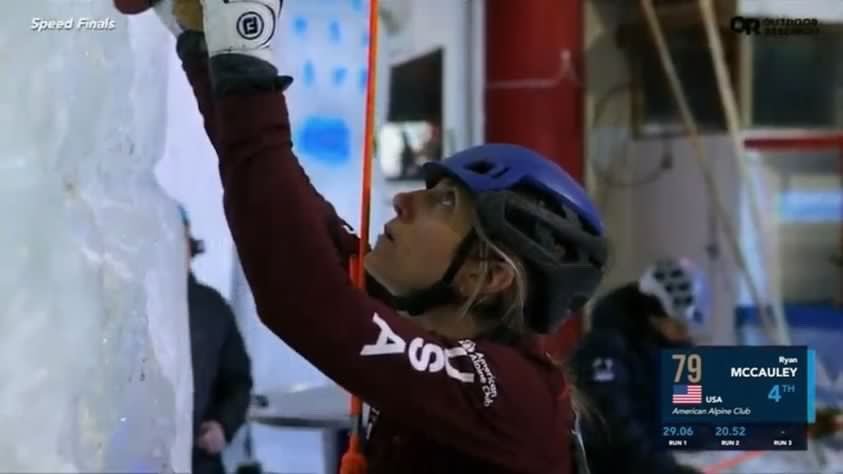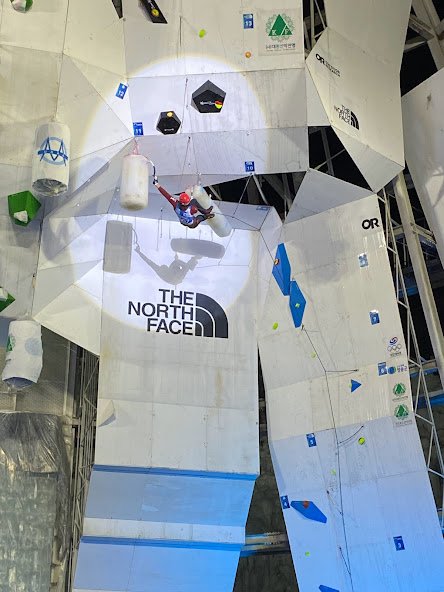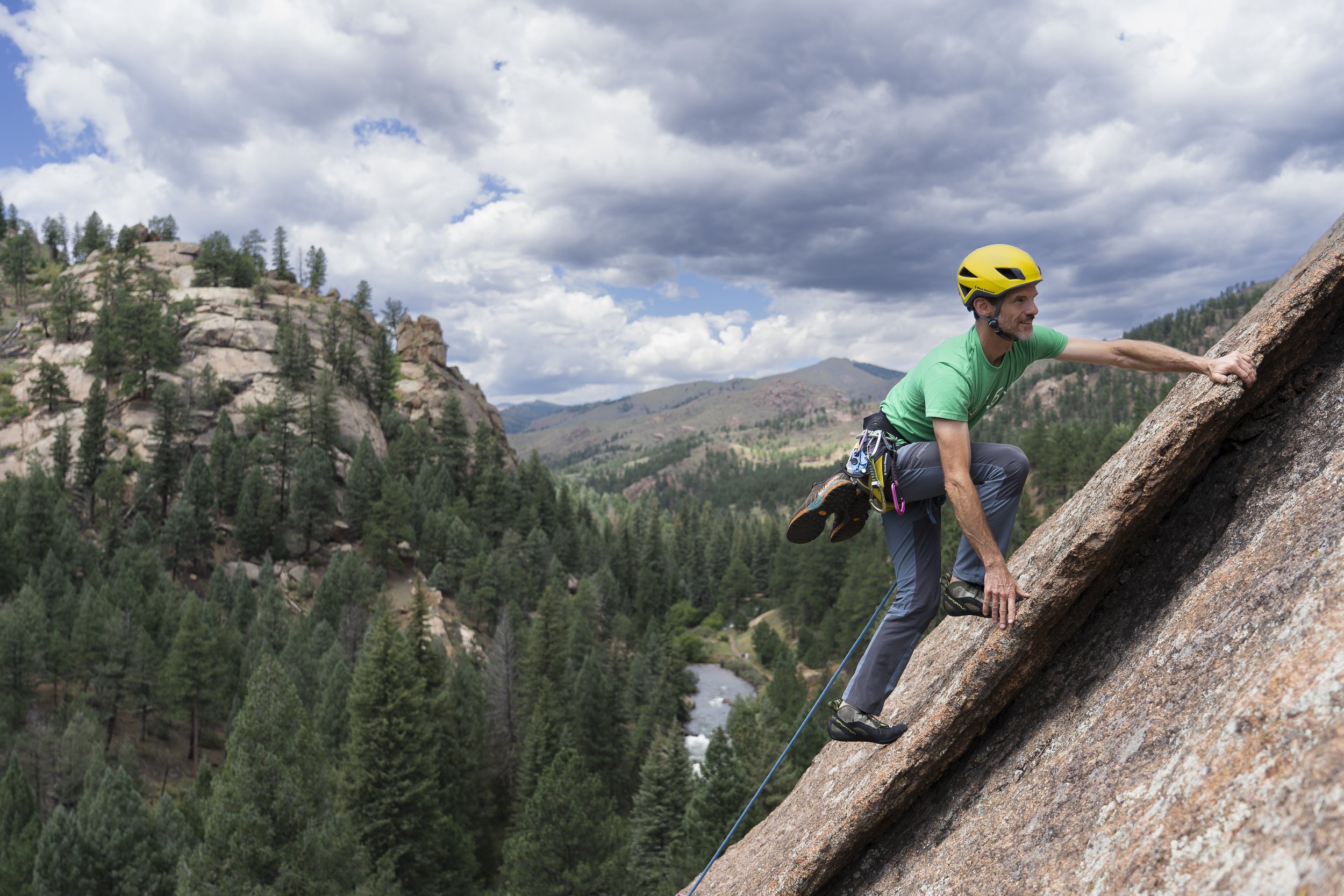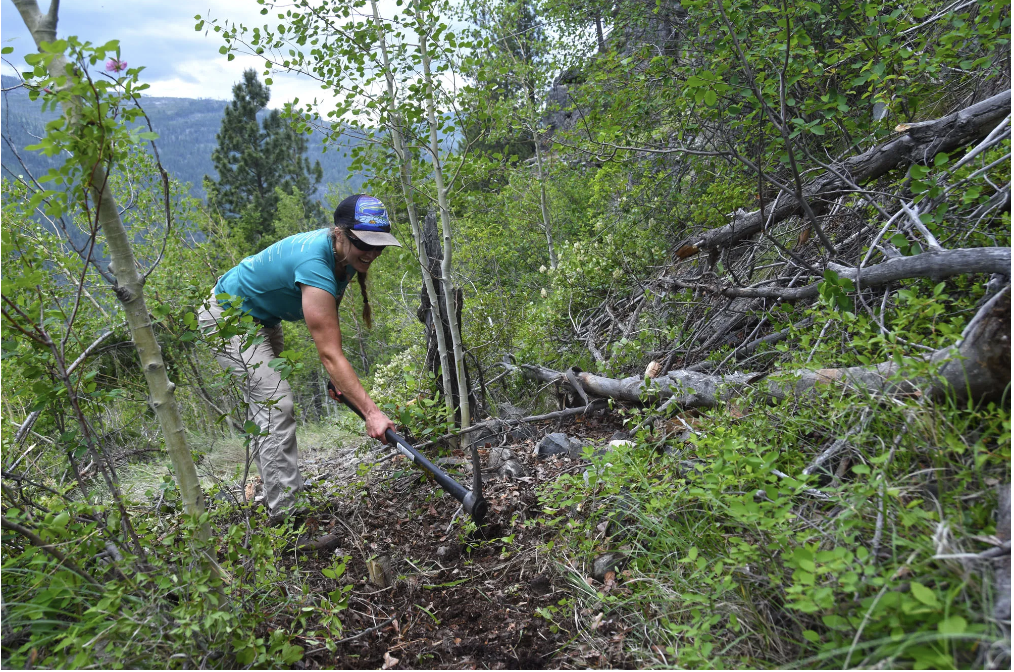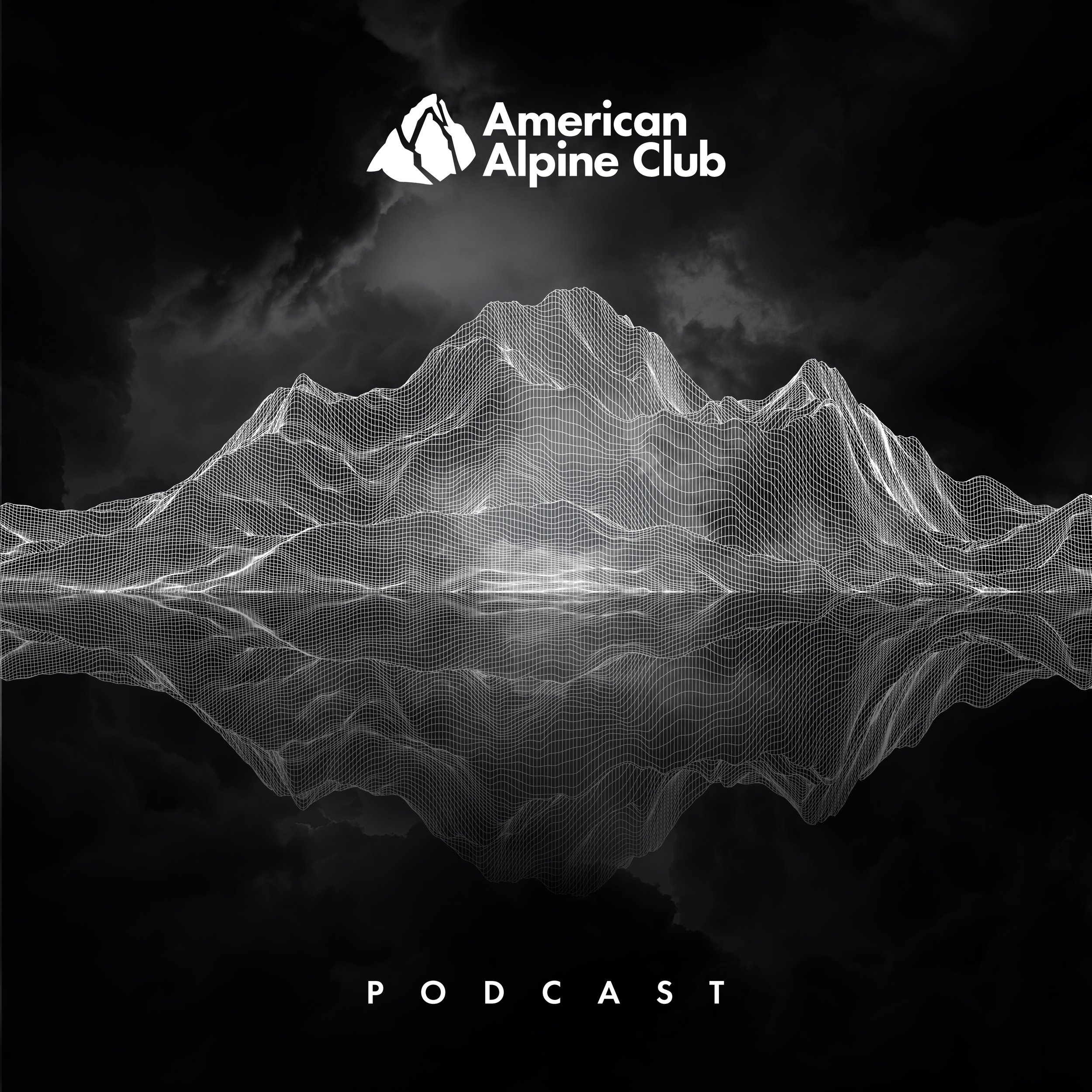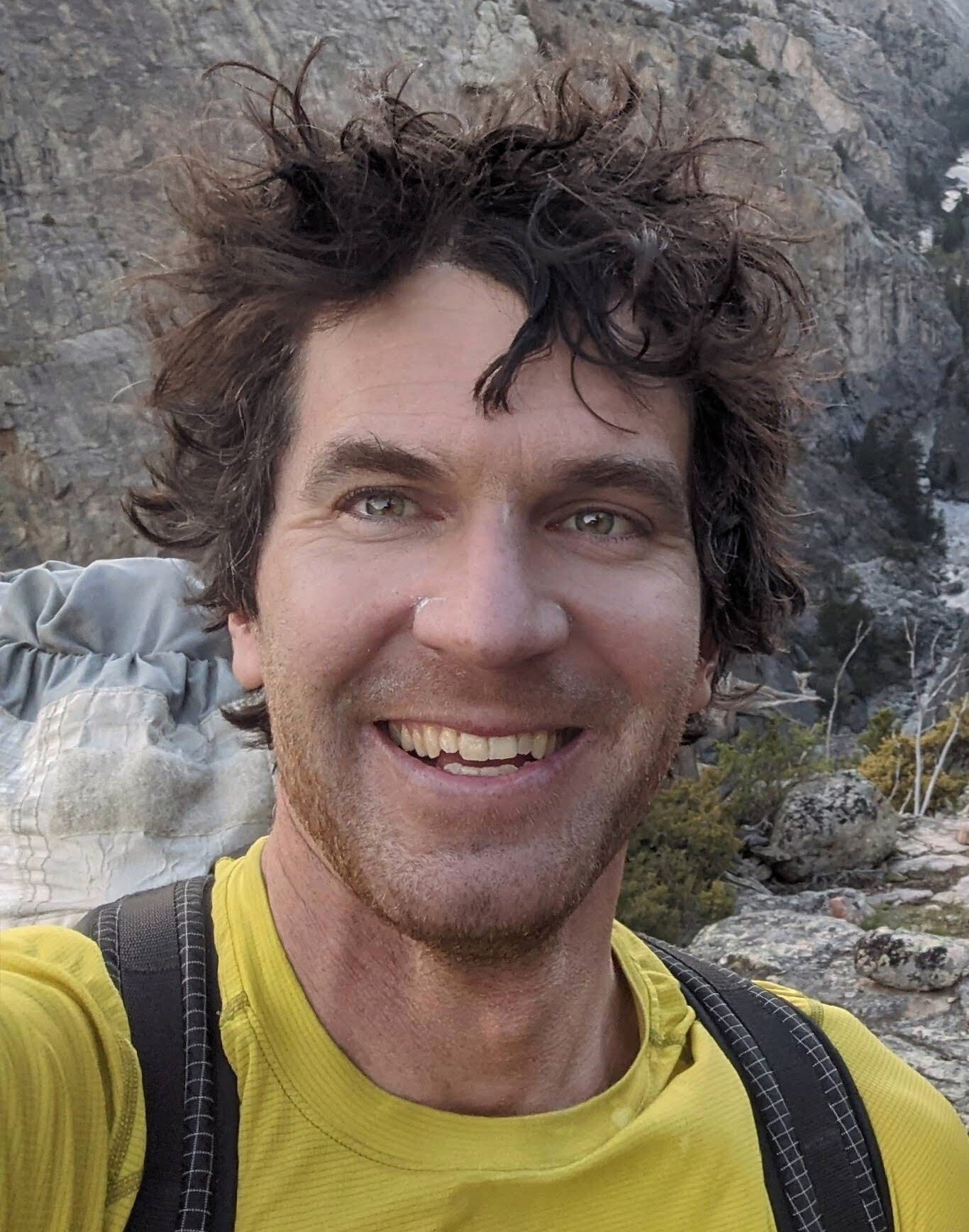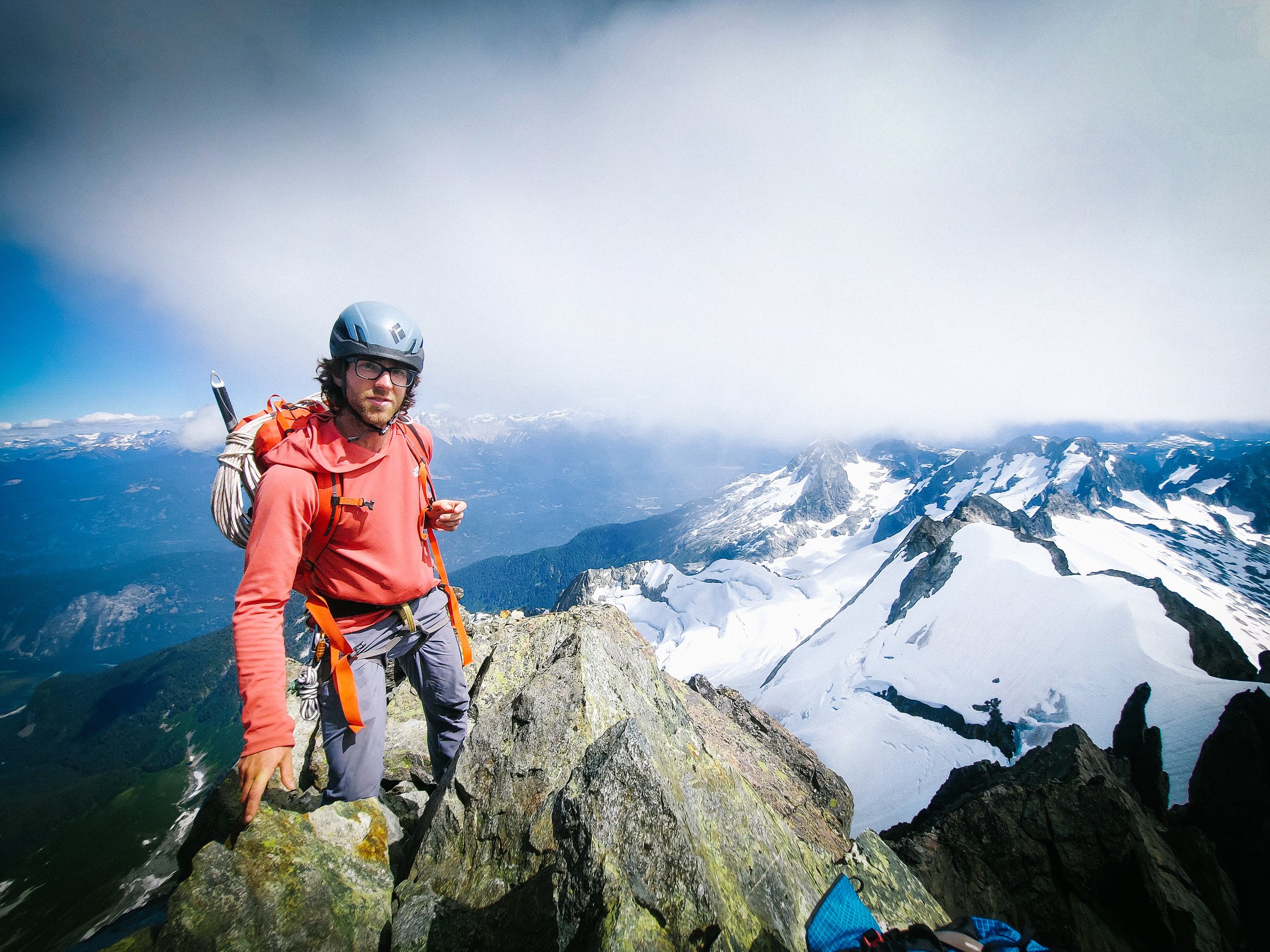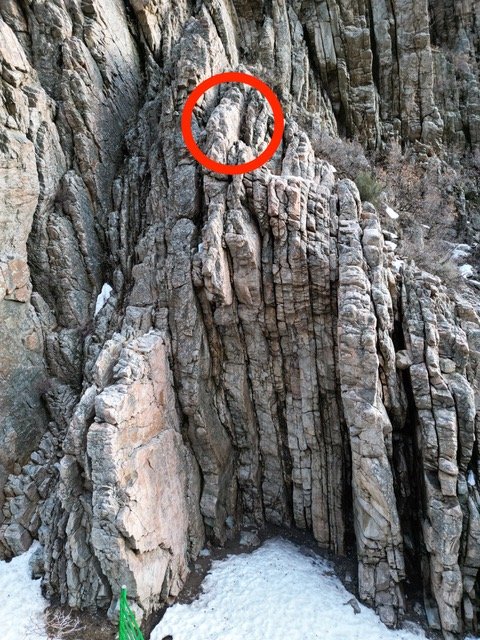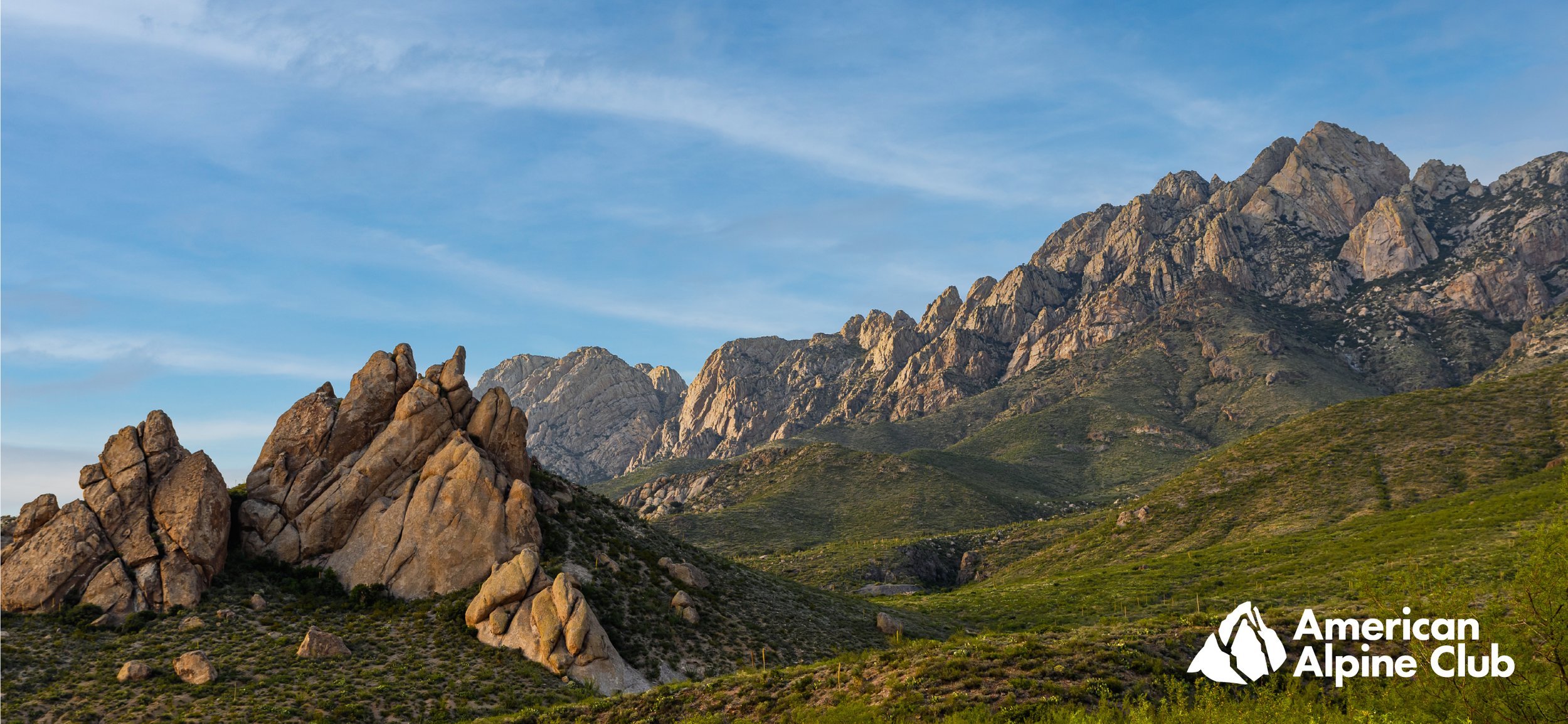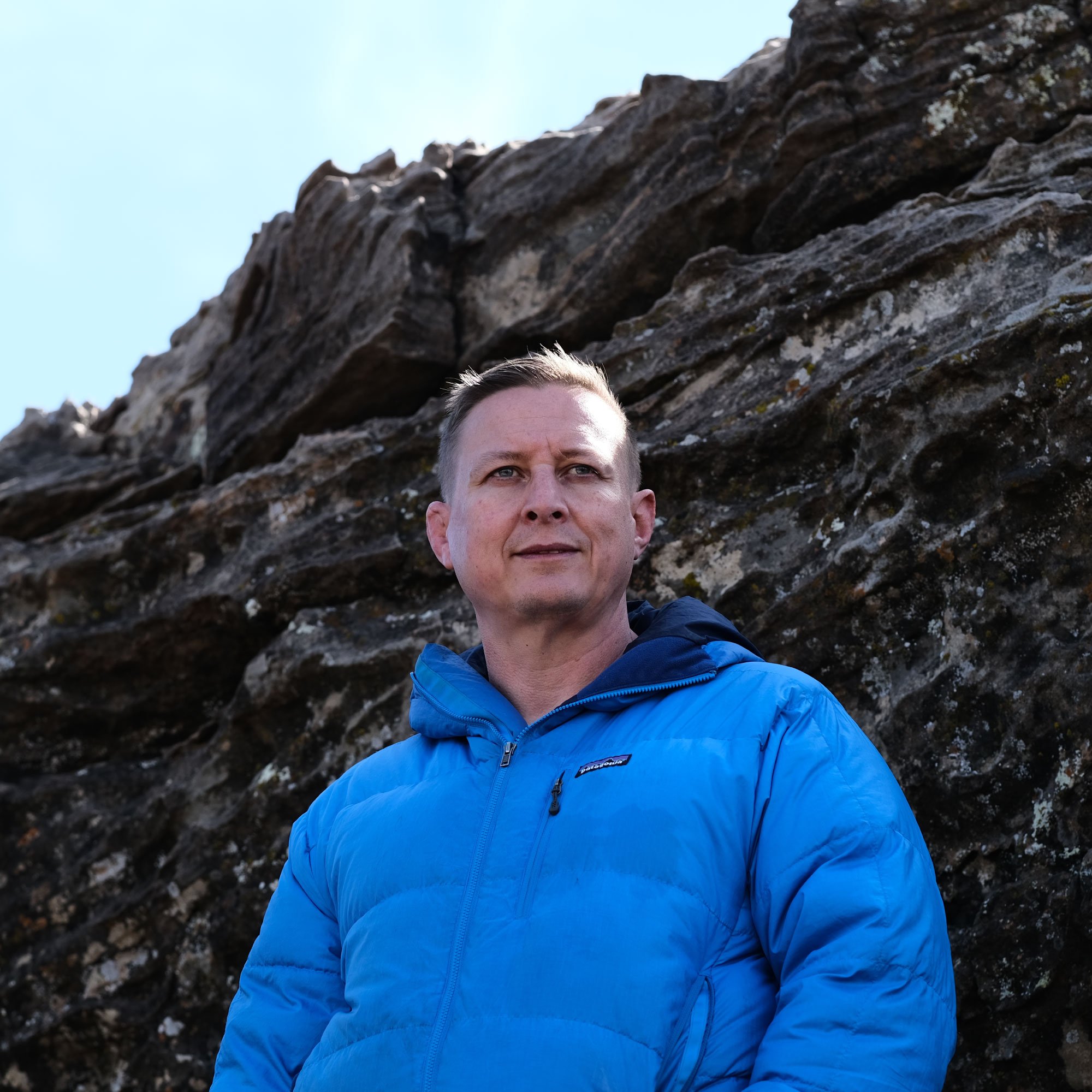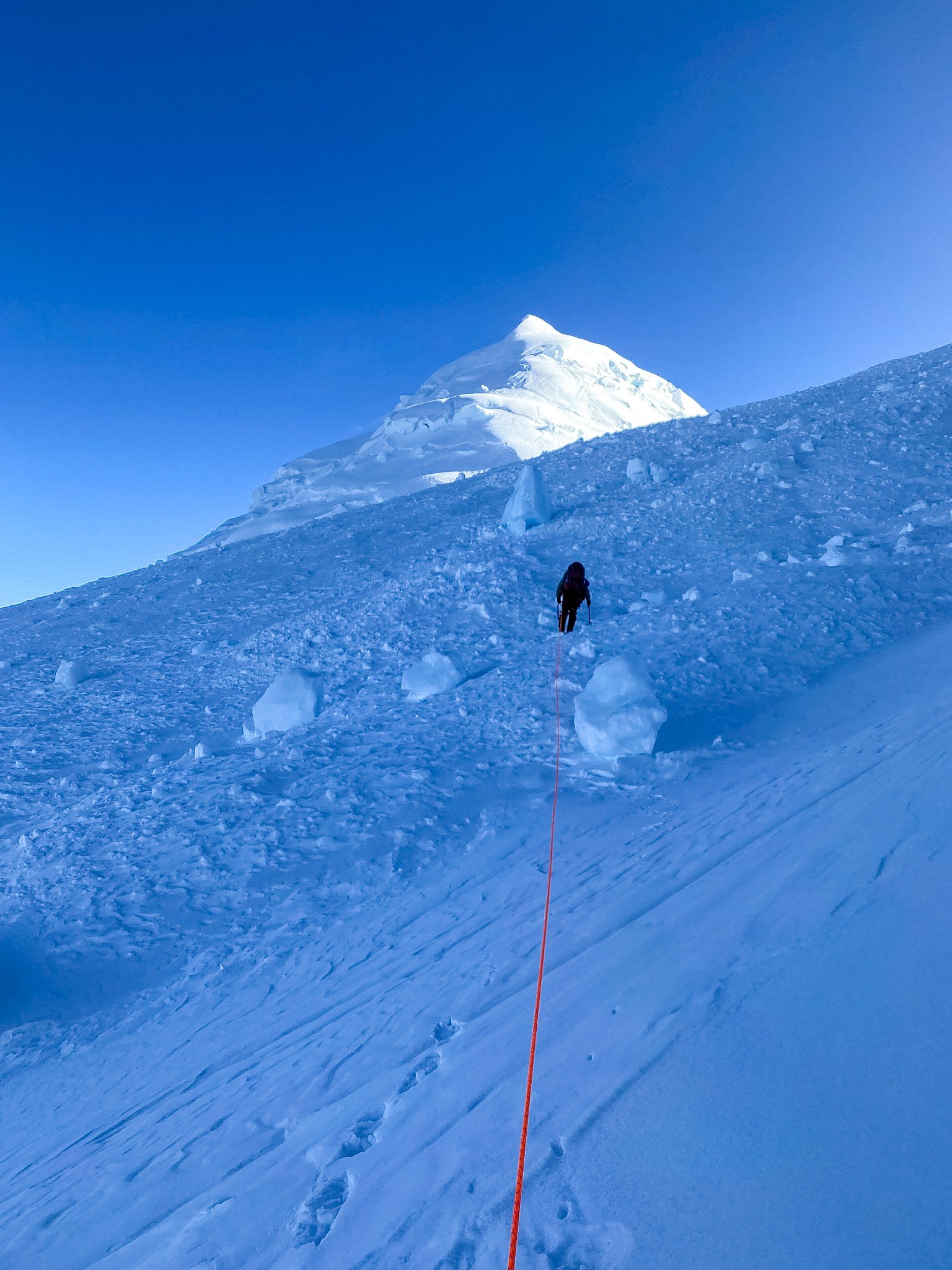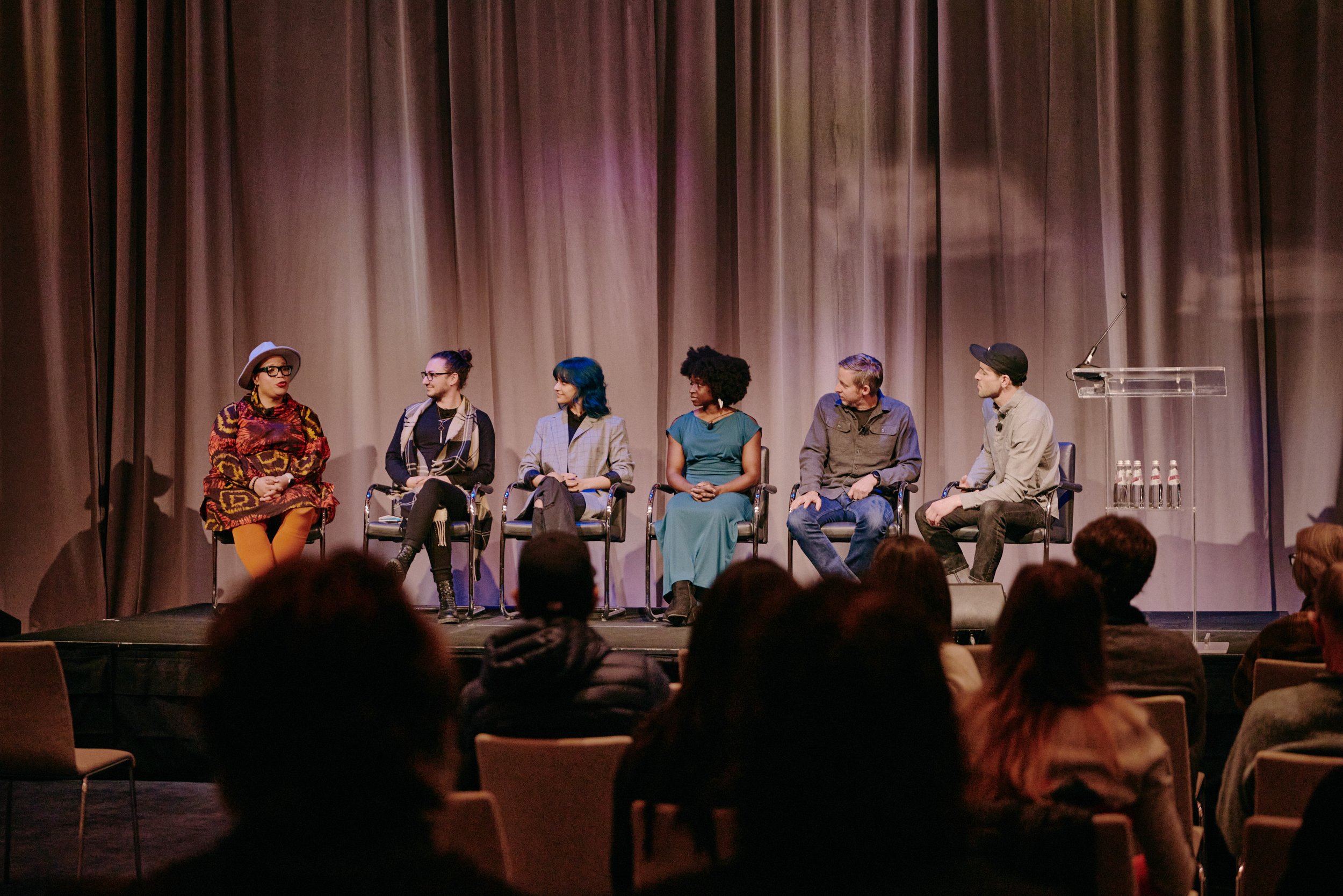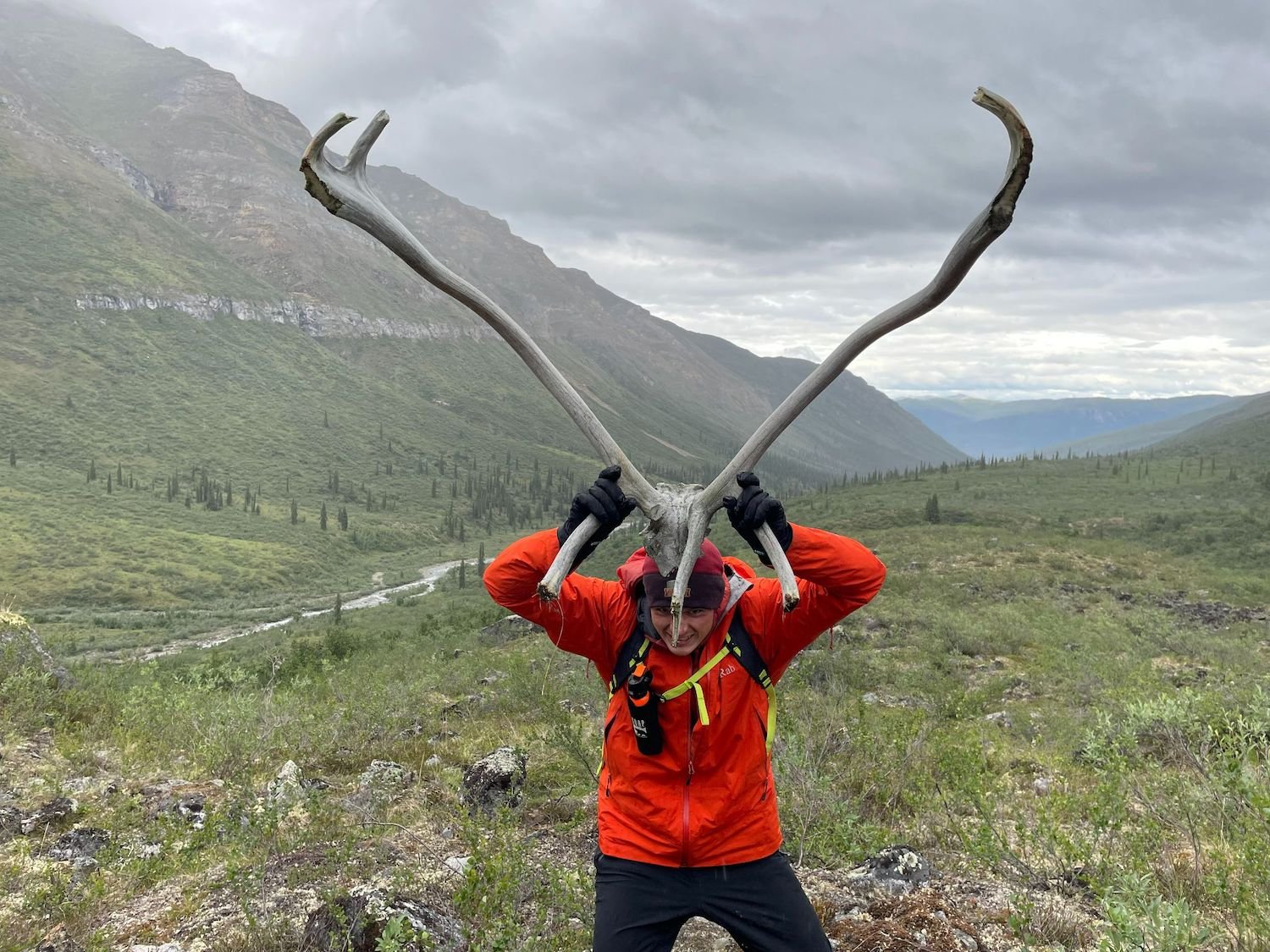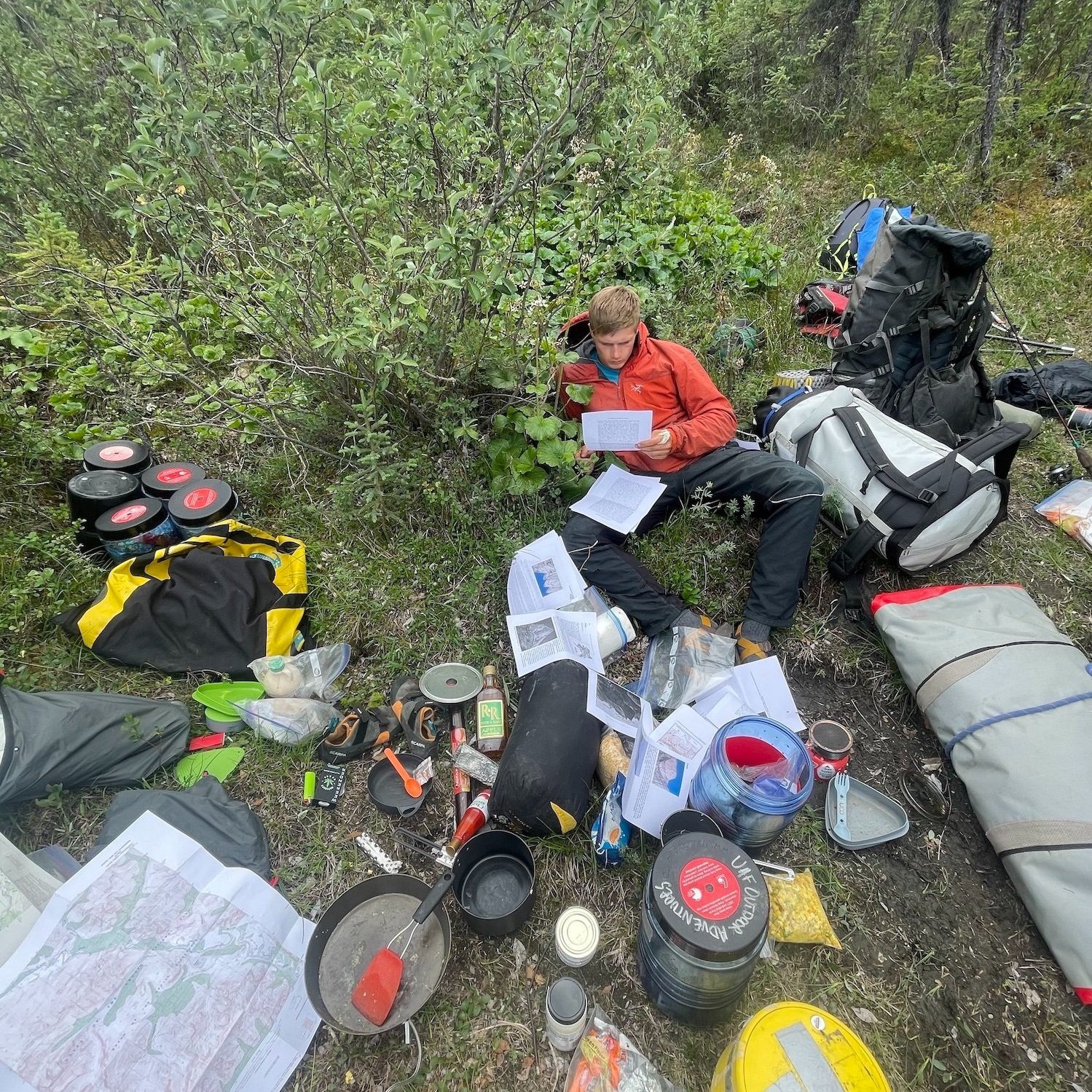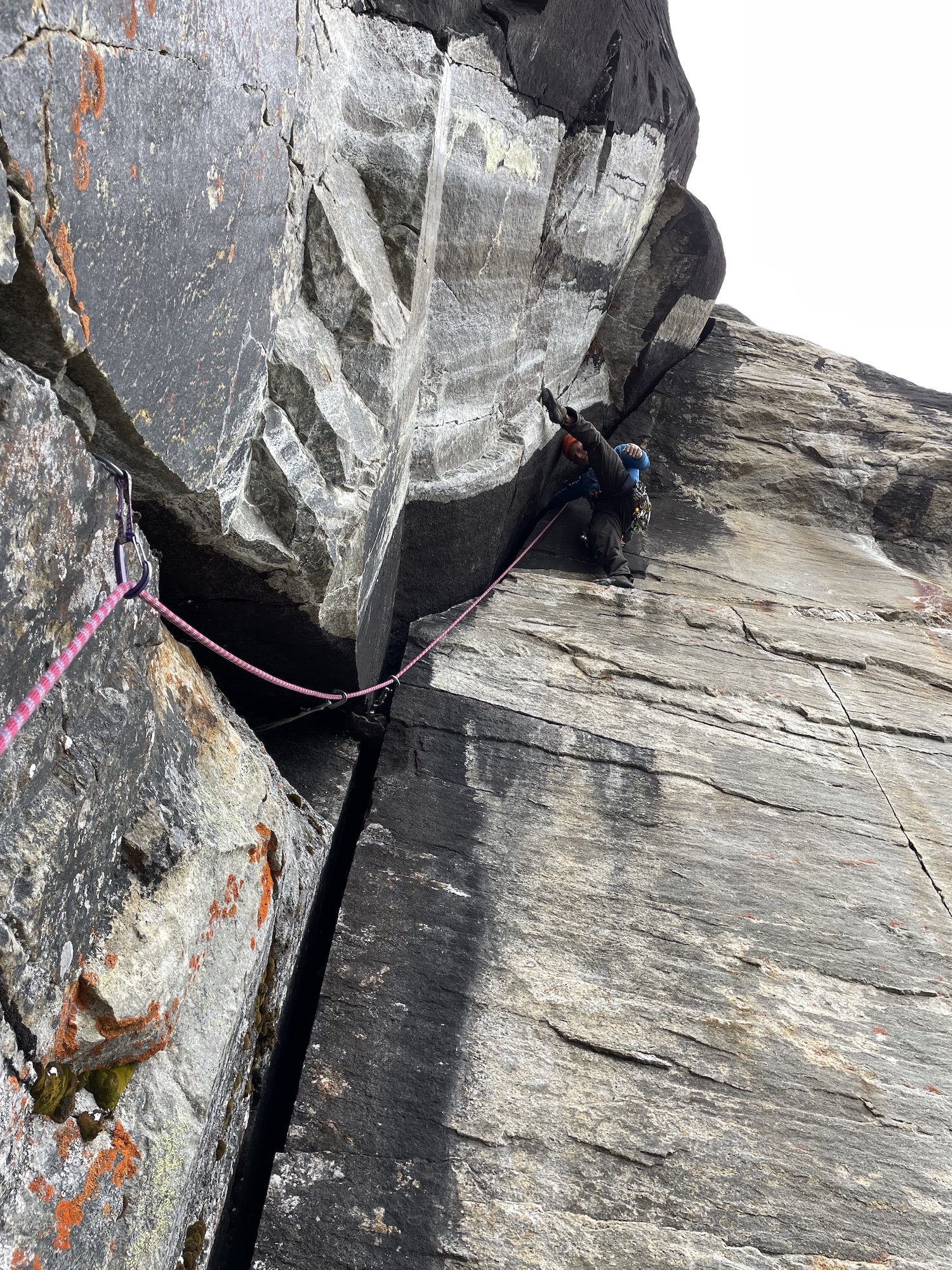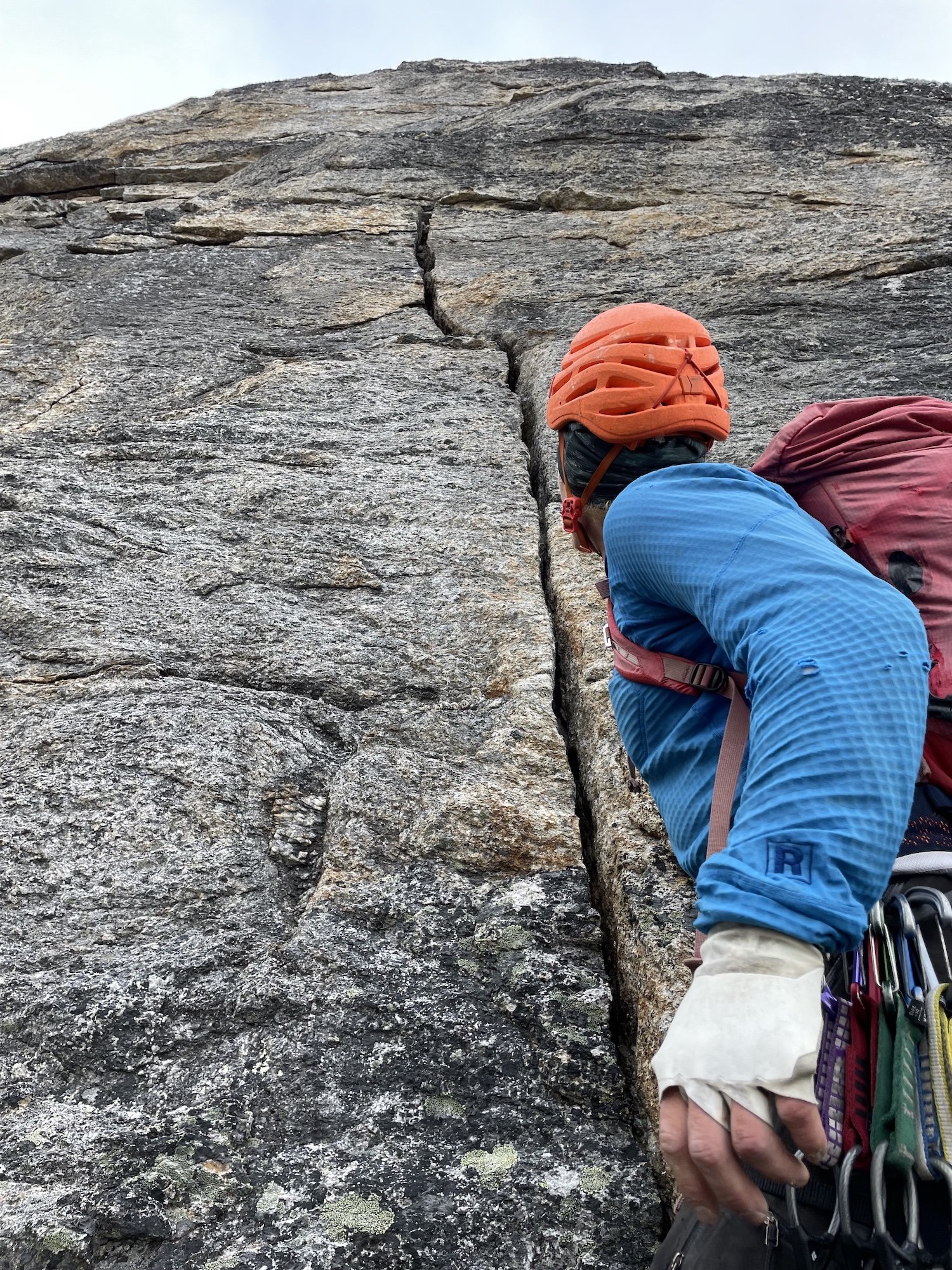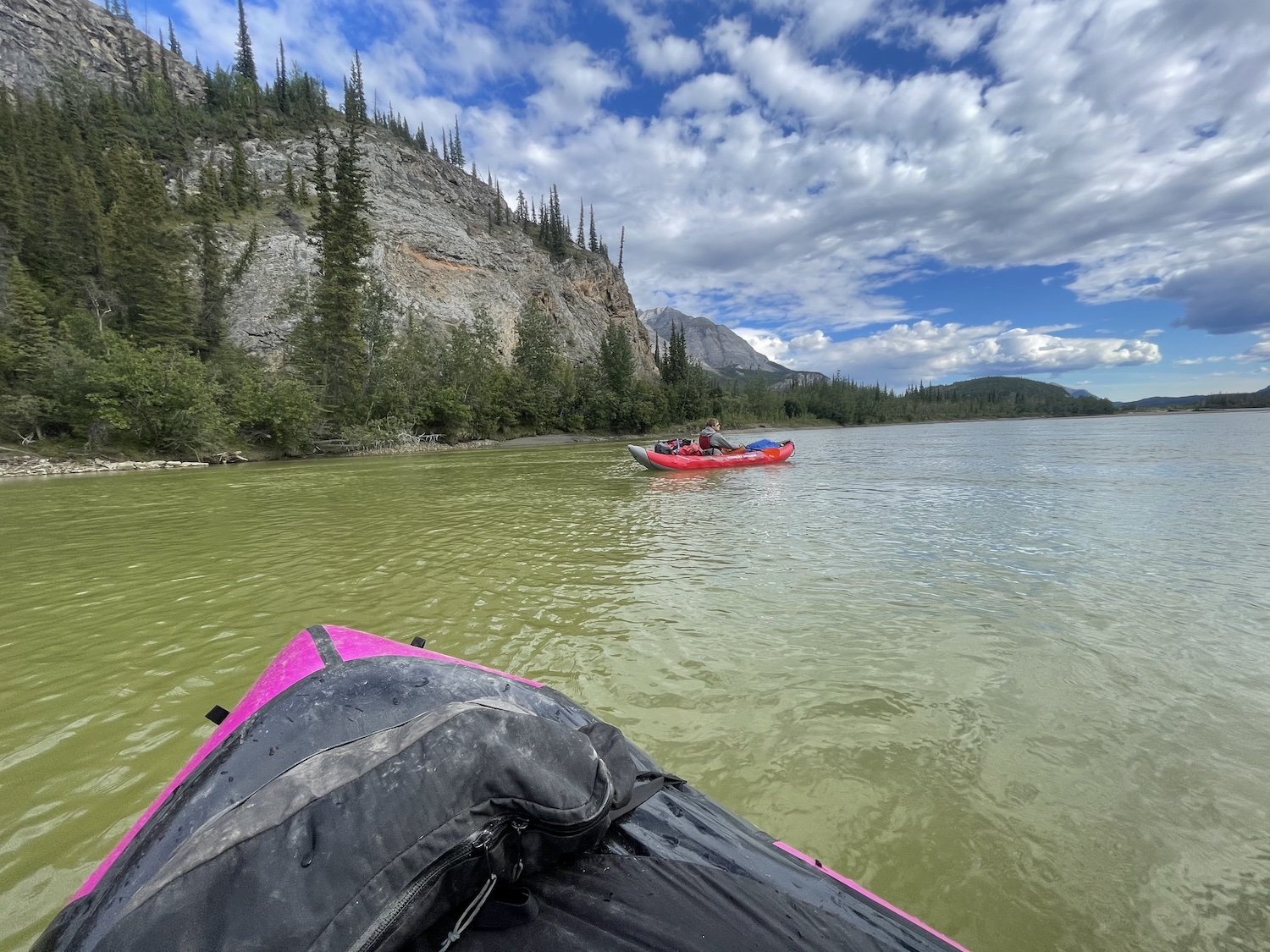It’s the hottest topic since the bolting wars, but most climbers don’t know about it yet. Are you fully in the know? The lay of the land is changing—climbing access is changing—and you can help us change it for the better. Two pieces of federal legislation have been introduced in Congress: AORA, which will modernize the permitting system on public lands and increase access and opportunity for guides of all recreational backgrounds; and the PARC Act, which aims to protect the traditional use of bolts and other fixed anchors in Wilderness areas, like Yosemite and Joshua Tree. But don’t rely on hearsay. Get the full breakdown on the implications of these pieces of legislation here, and find out what you can do to get them over the finish line and protect and modernize climbing on our public lands.
Voices From The Guiding Community
Photo by Jeremiah Watt.
Guides are often the unsung heroes of the climbing community, and being able to offer guiding services is not as simple as it seems. Tune in to hear straight from guides from across the country about how permitting is impacting the guiding landscape.
Among others, AMGA guide Dale Remsberg weighs in: “For me as an AMGA/IFMGA guide, access to varied terrain is what gives the ability to work and have a successful career. Some of the new legislation could greatly help with guide mobility and the ability to take our guests to terrain that is best for them or the conditions. Currently with access being so restricted it’s difficult to navigate poor conditions and provide quality experiences for our guests.”
Sign Up For AAC Emails
An Interview With: Phil Powers
Photo by Jeremiah Watt.
Phil Powers is the former CEO of the AAC, owner of The Mountain Guides in Jackson, WY, and has 40+ years of guiding experience. He’s seen guiding change and grow, and he knows what’s at stake with the passage of legislation like AORA and the PARC Act. We sat down with Powers to get a more in-depth look at the guiding landscape, and to understand how critical AORA and the PARC Act are to guides and the climbing community as a whole. His tangible details are a really compelling look at why all climbers should be activating to advocate for these bills!
Sign Up for AAC Emails
An Interview With: Patrick Harrington
Patrick Harrington is the manager of the Wyoming Office of Outdoor Recreation. We sat down with Harrington to dig into why AORA is imperative legislation to pass for all outdoor recreationists, and for sustaining the outdoor recreation economy at large. With his experience managing and advocating for recreation in one of the most sought after locations for US sport and adventure climbing, we learned a lot about how legislation like AORA can have a reverberating impact: on rural getaway communities, on the accessibility of climbing, on the economics of guiding, and more.
Sign Up for AAC Emails
Know the Ropes: Safer 4th Class
Each year we see many accidents that very likely could have been prevented or mitigated by the use of a rope in easy terrain, including unroped falls on technical alpine ridges (often caused by loose rock), approach and de- scent accidents due to rockfall or small slips, and scrambling accidents in terrain deemed “too easy for a rope.” This article seeks to make climbers aware of alternatives to soloing (scrambling) that use the equipment they’re likely carrying anyway and incur little or no time cost.
Tom Hornbein (1930 – 2023)
Hornbein on the 1963 Everest expedition.
On May 6, the American Alpine Club and climbing community lost a luminary, a mentor, and a dear friend. Tom Hornbein, MD, was a legend in American climbing. Hornbein and Willi Unsoeld ushered in the modern era of mountaineering and set the standard for future generations with their iconic ascent of the West Ridge of Everest in 1963. This audacious feat has perhaps yet to find an equal in the annals of Himalayan climbing.
Tom Hornbein in March of 2023. Photo by AAC member Jim Aikman.
In his youth, Hornbein pioneered standard-setting rock climbs. In 1949, he climbed Northwest Passage in the Boulder Flatirons, incorporating the first use of sophisticated direct aid in the area. In 1952, Hornbein made the first serious foray onto the Diamond of Longs Peak. He’d return decades later and climb that iconic wall at age 64. In 1953, he led Hornbein Crack on the Chasm View wall with virtually no protection. At the time it was the hardest pitch of free climbing in the high mountains.
However, Hornbein will always be remembered for the West Ridge of Everest. In an interview for the American Alpine Club's Legacy Series, Hornbein described a shared fire to pursue the team’s objective: "Those of us on the West Ridge team needed something more than just to climb Everest—to do something that was different than what the Swiss and the Brits had done. We really wanted an adventure that we didn't feel was there for us on a route that had already been climbed a couple of times. That was the transcendent force: to be challenged by something that we didn't know we could likely pull off."
For his contributions to climbing and the American Alpine Club, Hornbein was awarded the AAC President's Gold Medal twice, once in 2013 along with the other members of the 1963 Everest team and again in 2020, as the sole recipient. The AAC President's Gold Medal has only been awarded seven times in the organization's history. He also received the AAC Honorary Member award and the Angelo Heilprin Citation award for exemplary service to the Club.
His professional achievements rivaled his feats in the mountains. Dr. Hornbein was Chairman of the Department of Anesthesiology at the University of Washington School of Medicine. He studied human physiology and performance at high altitude, making his work a link between medicine and mountaineering.
Throughout the years, Horbein was an inspiration to us all. AAC Board President Graham Zimmerman's recollections of Hornbein reveal the heart and soul that Horbein brought to climbing: "Tom Hornbein inspired us to dream big, fiercely pursue those dreams, and be exceptionally kind while on the journey. Not only did he demonstrate a dedication to climbing, but he also provided an example of how our experiences in the mountains can be applied to make the world a better place.
Tom was a friend whom I'm going to miss very much."
Hornbein’s generosity made a significant impact on the AAC during his life, and for that the Club will be forever grateful. His devotion to our craft and his passion for life have inspired generations of climbers, and his influence and example will continue to live on.
Legacy Series, Episode 5: Tom Horbein
Learn more about Tom Hornbein, MD, and his contributions to climbing through this Legacy Series video.
PROTECT: The New Bolt Wars? Protecting America's Rock Climbing in Wilderness
Are you up to date on what’s at stake in American Wilderness climbing?
Climbing in America’s Wilderness areas—places like Joshua Tree, Yosemite, the Black Canyon of the Gunnison, and so many other iconic climbing areas—is under threat. The bolting wars of old have been revived, but with a new inflection. It’s no longer sport climbers and trad climbers duking it out. Federal land managers feel cornered by increased usage on our public lands...and are arguing its necessary to ban the use of fixed anchors. But this is in conflict with climbers, who know that fixed anchors have always been allowed in Wilderness and prohibiting them will not resolve this issue, but only present new ones. While normally climbers and land managers are partners, this disagreement over fixed anchors in Wilderness is a strong threat to our ability to work together. So what exactly is this bolting war about, and what’s at stake here?
In this episode, the AAC sat down with Erik Murdock, the Vice President of Policy & Government Affairs at Access Fund, to talk about the nitty gritty details of this critical conversation about bolting and fixed anchors in Wilderness. We also cover the Protect America’s Rock Climbing Act (or PARC Act), which will help climbers preserve climbing in Wilderness as it has been historically protected, and continue to partner with land managers to conserve the public lands we all love.
Take Action! Help us protect Wilderness Climbing!
Get your legislators to support the PARC Act and protect Wilderness climbing!
The Power of Beginning Again: Reflections from the USA Ice Climbing Team
Chelsea Kyffin and Jessica Perez jogging to warm up near the World Cup competition structure in Champagny-en-Vanoise, France. PC: Ryan McCauley
By Ryan McCauley (she/her)
“I mean this in the nicest way possible,” my teammate Marian Prather said, hesitating to finish their sentence. “But this experience kind of reminds me of helping my Mom with social media.” I erupted with laughter as I glared at my iPhone screen in the middle of a South Korean coffee shop, mouth agape, processing the newly learned fact that it was impossible to edit a posted Instagram story (that I had just spent 45 minutes carefully crafting with a lot of hand-holding from Marian and another friend on the USA Women’s Ice Climbing Team). I wrinkled my nose and jokingly prodded back, “Your Mom sounds cool. Is she also 35?”
This was Ryan's third and final speed run in women's finals in the World Cup in Saas-Fee, Switzerland. PC: UIAA Livestream
It was honestly the first time that weekend that I had truly relaxed, given myself permission to sit with the ridiculousness of the moment, and allowed joy to creep in. I had been too busy focusing on the pressure of my performance expectations at the first UIAA Ice Climbing World Cup of the ‘22-’23 season. Sadly, this anxiety was quickly replaced by disappointment as the results started rolling in. Nothing like training for months and flying across the world, only to fall off one swing into the speed climbing competition or slip off a lead move I had done numerous times at the training gym back home, to make me question my efforts. Although it was only my second season competing, my hopes had exceeded reality. Beginner or not, I should have done better.
If I was being honest with myself, the desire to make my Instagram story perfect by zooming in on every detail was representative of more than just my mindset at the South Korean World Cup. As a woman who has been drawn to sports historically dominated by athletes identifying as male, I have often leveraged perfectionism as a way to prove that I am good enough to belong in a given space. Asking for help is something I’ve learned to avoid at all costs. I have a tendency to approach other women with a slight hesitation or skepticism—as I try to assess how others might compare my performance to hers. Vulnerability is something I don’t share easily.
Ryan climbing in Women's speed climbing finals in the World Cup in Champagny-en-Vanoise, France. PC: Nils Paillard
So, it was intentional that my first-time dry tooling (the nuanced, competition-version of ice climbing) was at a Ladies’ Night at the Ice Coop dry-tooling gym in Boulder, which was the only facility of its kind in the U.S. at the time. I did not want to be a total novice in front of men. Beyond being male-dominated, it was also a sport nobody had ever heard of.
I joked that I was going to the hardware store when trying to explain the concept to others. Even presenting it as “indoor mixed climbing” seemed to fall flat for many. Traversing climbing routes by hooking ice tools on plastic or metal rock climbing holds was hard to comprehend. Kicking into plywood walls with specialized crampons to simulate ice climbing was confusing to visualize. And doing it all in a bouldering format at the Ice Coop without ropes seemed downright dangerous. But there was something about the challenge that hooked me. The promise of what was possible was too enthralling to ignore as I watched old YouTube videos of experienced athletes hanging upside down from swinging boxes during the 2019 UIAA Ice Climbing World Cup in Denver. However, even with this excitement, I swindled a coworker to go with me that first night so I didn’t have to risk looking like a fool in front of a group of strangers. Beginner or not, I was not going to embarrass myself.
Ryan McCauley climbing Catwoman (D10) at a dry-tooling crag in Quintal, France. PC: Justin (Jay) Jacobs
Despite my initial insecurities, that first evening dry-tooling injected an energy into me that I didn’t know existed. As a sport climber who was used to navigating routes that demanded either a lot of power or a plethora of precision, I loved how dry tooling required both. Moments that forced me to intentionally slow down my breathing and trust my exhausted arms to connect the pick of my tool with a tiny pocket on the side of a hold sent waves of enthusiasm through my entire body. I was stronger than I knew.
For the next year, I dove headfirst into every opportunity to grow and improve. I signed up for a gym membership, joined the local team, entered competitions, invested in new gear, and started attending a summer training group. Things were going well and I was excited. However, I had been so consumed with competition outcomes or team rankings to prove my “enoughness” in the sport that I hadn’t paused to reflect on the bigger picture or express gratitude for the larger value I was deriving from this space. Beginner or not, I would not allow myself to make excuses or fail.
Climbing to Not Fall
France Competition structure. PC: Ryan McCauley
If you had told me in the summer of 2021 that I would be representing the U.S. in the Ice Climbing World Cup a mere year later, I would have laughed uncontrollably. I would have rolled my eyes at the thought of re-activating my Facebook profile so I could communicate with people just over half my age to schedule team practice for a sport that had hardly any training facilities. But I also didn’t anticipate the power of the community I felt that Friday at Ladies' Night. The possibility posed by the non-judgmental, inclusive space allowed people of all ages and backgrounds to show up as total beginners and be genuinely embraced for who they were. Trust, support, and advocacy were offered to each individual who showed up and tried, no matter how guarded or hesitant they were. While resources and funding for dry tooling are more limited in the U.S. compared to some other countries, countless people are volunteering their time to expand the sport and welcome new members with open arms.
And here I was, sitting in Cheongsong, getting discouraged and fixating on my mistakes a little over a year into the sport. I couldn’t help but ruminate on how it might have played out if I could only go back in time and edit my personal story—what if I had swung the tool slightly differently; had shifted my weight at a different angle; had trained harder; had found the sport at a younger age? It still felt so hard to disconnect from the scoreboard. Beginner or not, those results defined my success.
Keenan Griscom climbing in Men's Lead Semi Finals at the France World Cup in Champagny-en-Vanoise. PC: Nils Paillard
That evening, while riding the bus back to our hotel from the competition venue, I sat next to Keenan Griscom, the top-ranked athlete on the USA Men’s Ice Climbing Team. He was just shy of his 19th Birthday and had been competing in a variety of climbing disciplines since middle school. As we debriefed the day, I was struck by the way he balanced both seriousness and lightheartedness when talking about his own performance expectations. As someone who had made finals and was slated to compete again the following day, I anticipated him to feel much more pressure than he did. Intrigued, I pummeled him with questions about his journey as an athlete, how his training had evolved, and even concerning his personal definition of success. Keeping a humble tone, Keenan noted times when a higher ranking he received didn’t elicit pride because he knew deep down that he had failed to fulfill his own potential. Similarly, he confidently recounted times when a lower score ended up being a cause for celebration because he knew within himself that he gave the competition his all.
I had noticed this same open-mindedness and curiosity earlier when someone had asked for advice on filing their picks and he had encouraged them to trust themself, experiment with an approach, and see how it went. The feisty millennial in me wanted to say something to the effect of, “It makes sense you don’t feel pressure to get it right this time, you have so many competitions ahead of you before your knees fall apart!” and it suddenly hit me. I was getting in my own way. I was the only one telling myself I had to show up perfectly now; believing that there was indeed an expiration date on this opportunity.
Keenan Griscom climbing in Men's Lead Finals at the South Korean World Cup in Cheongsong. PC: Rhea Kang
Sure, I wasn’t getting younger. And I might still never get to the same level as some of my teammates who had already been competing for nearly a decade and were 15 years my junior. But, hyperfocusing on my scores was damaging my confidence and blinding me to the massive privilege of the opportunity in front of me. Just as with the stupid Instagram story, things were already live and I couldn’t go back and update the countdown hashtags (or so I’m told— please reach out if you know otherwise) or go back in time and swing my tool into the ice tower further to the right when speed climbing. All I could do was laugh about it, remember to tag people before hitting “upload” next time, and be present with the amazing community around me at that moment.
What if I shifted the story from “What place did I get?” or “How did I compare?” to instead be about “What did I learn today to get 1% better?” “What progress can I celebrate?” or “Who did I connect with?” So much of my current narrative was driven by fear and the pressure wasn’t getting me on the podium. What if I reframed success to be about the experience rather than whether or not I fell?
Climbing to Play in the Present Moment
Ryan McCauley reaching the top of the speed wall during Women's Speed Climbing Finals in the Saas-Fee, Switzerland World Cup. PC: Robert Hendriksen
As naive as it felt, I pushed myself to focus more energy during the France World Cup on things like laughing with teammates about our “Nascar pit stop” sharing of speed crampons or joking about the record time it took my Nalgene to freeze. By the third and final competition in Switzerland, I found myself fully dancing to the music at the base of the ice tower while waiting for my turn to climb. It was the longest and steepest speed structure we had encountered so far and people were falling fairly consistently. If anything, the pressure was higher—but I had slowly started to feel gratitude for it all. “Once in a lifetime opportunity” had shifted from meaning I only had this one competition to demonstrate my entire worth to instead serving as a reminder to soak it all in. I chatted with international athletes and made silly faces at the live-stream cameras. I was going to make the most of this moment.
Suddenly, everything clicked. My tools hooked the ice smoothly one after the other and my feet glided up the wall in a delicate, nearly effortless dance. I shrieked as I turned around to look at the timer: 20.52—nearly 9 seconds off my last run and a time that would put me in 4th place overall. I guess this approach wasn’t so silly after all. I’d be lying if I said it was easy to sustain this mentality in a high-pressure competition, that it looked the same for every athlete, or that it didn’t take the same kind of practice as showing up to training each week. But, wow, it made the effort so much more worthwhile and fun. Beginner or not, letting go of my fixation on the outcome could result in a more lasting definition of success.
Reflecting on the Season
USA athletes cheering on teammates in lead finals during the South Korean World Cup in Cheongsong. From left to right - Jessica Perez, Noah Bergman, Sam Serra, Marian Prather, Dominic Gonzalez-Padron. PC: Rhea Kang
Overall, as a Team, the U.S. walked away with one of the most successful seasons we have had in the past few years. There were a lot of milestones to celebrate, such as Cat Shirley setting a record for the first-ever American woman to qualify for UIAA World Cup lead finals or Keenan Griscom earning 4th and 5th place, respectively, for lead climbing in two of the World Cups! (*see box below for more specifics).
Perhaps even more exciting to see was how much closer our community became through the shared experiences of relentless months of training, hectic or jet-lagged travel, competition stressors or mistakes, celebrations of personal or team growth, and unexpected memories made. Early morning group warm-up runs, aggressive games of Taco Cat Goat Cheese Pizza back at the Airbnb, and hugs from other athletes after emotional moments of doubt are the things that will stick with me for years to come.
There is still so much work that needs to be done in the United States to help strengthen our reputation as a competitive team and develop the sport of dry-tooling. There were moments where we jokingly noted how dry tooling was a “real sport” in other countries as we came across a multitude of gyms in Seoul where we could train and found celebrity-style posters of dry-tooling athletes in the local tourist office. It could have been tempting to be frustrated by how far behind the U.S. is concerning this, but many teammates also commented on how incredible it was to be at the frontier of this sport in our country, helping to build a stronger foundation alongside organizations like the American Alpine Club and Rab.
Justin (Jay) Jacobs warming up on the dry-tooling warm-up wall at the World Cup in Champagny-en-Vanoise, France. PC: Sam Montgomery
We may not be able to successfully revolutionize the future of dry tooling in the U.S. overnight. However, this season taught me so much about the power of giving ourselves permission to embrace the imperfections and be patient with growth. The acceptance and vulnerability that comes with this approach allows us to clearly see our own strengths and empathetically show up for others. We get to choose to contribute to success that is bigger than ourselves and accelerate our growth with each mistake. Beginner or not, letting go can actually magnify the power of our team.
Some of the specific USA women’s achievements worth noting include:
Cat Shirley (right) congratulating Roz Reynolds (left) on qualifying for Women's Lead Semi Finals at the South Korean World Cup in Cheongsong. Sam Serra is standing in between the women and Noah Bergman is off to the right. PC: Rhea Kang
South Korea:
Jessica Perez & Roz Reynolds competed in their first-ever World Cup competition!
Cat Shirley & Roz Reynolds reached the top of the lead climbing qualification routes and continued on to compete in the semi-finals, placing 8th and 16th respectively, out of a field of 31 female athletes. Cat is the first US woman to ever qualify for the UIAA World Cup lead finals!
Cat Shirley, Marian Prather, & Roz Reynolds progressed to speed climbing semi-finals, ultimately placing 3rd, 8th, and 11th respectively, out of a field of 25 female athletes. Cat walked away with a bronze medal for this performance!
Champagny-en-Vanoise:
Chelsea Kyffin competed in her first-ever World Cup competition!
Jessica Perez, Chelsea Kyffin, & Ryan McCauley climbed in temperatures of 8 degrees Fahrenheit each day during women’s lead qualifications and still made gains between their first and second routes averaging about three quickdraws higher!
Ryan McCauley & Chelsea Kyffin competed in women’s speed finals and shaved off a combined 10 seconds on their runs as they placed 7th and 14th respectively, out of a field of 16 women.
Saas-Fee:
Gabrielle (Phoebe) Tourtellotte competed in her first-ever World Cup competition!
Ryan McCauley & Lauren Shartell earned spots in women’s speed finals and placed 4th and 8th, out of a field of 21 women. With scores in all three competitions, this put Ryan in a tie for 6th place in overall women’s 2023 World Cup speed standings!
Some of the specific USA men’s achievements worth noting include:
Keenan Griscom working out the sequence for Men's Lead finals at the South Korean World Cup in Cheongsong. PC: Rhea Kang
South Korea:
Sam Serra, Ian Wedow, Daniel Koepke, Noah Bergman & Dominic Gonzalez-Padron competed in their first-ever World Cup competition!
Keenan Griscom & Tyler Kempney progressed to lead climbing semi-finals with Tyler successfully reaching the top of one lead qualification route and Keenan topping both. Keenan further advanced to lead climbing finals and the two athletes ultimately placed 4th and 10th, respectively, out of a field of 37 male athletes.
Sam Serra progressed to speed climbing semi-finals, ultimately placing 14th out of a field of 26 male athletes.
Champagny-en-Vanoise:
Noah Rowley & Justin (Jay) Jacobs competed in their first-ever World Cup competition!
Keenan Griscom progressed to lead climbing semi-finals, ultimately placing 11th out of a field of 56 male athletes.
Noah Rowley progressed to speed-climbing semi-finals, ultimately placing 14th out of a field of 37 male athletes.
Saas-Fee:
Erik Gomez competed in his first-ever World Cup competition!
Sam Serra, Noah Bergman, & Keenan Griscom all successfully reached the top of one of the two lead climbing qualification routes.
Noah Bergman & Keenan Griscom progressed to lead climbing semi-finals, with Keenan advancing to lead climbing finals. The two athletes ultimately placed 13th and 5th respectively, out of a field of 49 male athletes.
Sam Serra progressed to speed climbing finals, ultimately placing 12th out of a field of 35 male athletes.
The USA Ice Climbing Team is supported by
The American Alpine Club Announces 2023 Cornerstone Conservation Grant Recipients
A trail worker from Save Mount Diablo. Photo provided by Save Mount Diablo.
April 2023
The American Alpine Club and REI are pleased to announce the 2023 Cornerstone Grant recipients. The AAC Cornerstone Conservation Grant was formally launched in 2011 to fund projects to improve, conserve, and protect local climbing resources nationwide. Seven local climbing organizations (LCOs), land managers and agencies, nonprofits, and individuals have been awarded a total of $25,000 for this grant cycle, for projects such as building or improving trail networks to climbing areas; establishing new toilet facilities and signage at trailheads; and deploying a variety of community groups for clean-up and graffiti removal at local crags.
Summersville Lake, West Virginia.
New River Alliance of Climbers will receive $5,000 for the Whippoorwill Restoration Project in Summersville Lake, West Virginia. All funds will go towards purchasing materials needed to complete the project: gabions, stone stair treads, split rail fence, and seeds for re-vegetation.
Carolina Climbers Coalition will receive $4,000 for the Table Rock Climbers Trail Rehabilitation in Table Rock, Linville Gorge, North Carolina. Funds will be used to rehabilitate the Table Rock Climbers Trail, a new NEPA-approved trail to a historical climbing area.
Northwest Montana Climbers Coalition will receive $1,000 for the Stone Hill Signage Project in Lake Koocanusa, Montana. Funds will be used for signage materials and installation tools.
Workers from the Stone Hill Trail Network Project doing restoration work. Photo provided by Stone Hill Trail Network.
Black Folx Rock will receive $5,000 for the Diversity in Conservation Project in Papago Park, Arizona. Funds will be used to create a trail, restoration, clean-up, signage, bridge creation, and erosion reduction for a heavily used rock climbing area.
Save Mount Diablo will receive $5,000 for the Pine Canyon Cleanup & Mount Diablo Adopt-A-Crag at Mount Diablo State Park, California. Funds will be used for equipment rental, fuel for equipment, PPE for volunteer participants, materials and tools for graffiti and litter removal, and limited staff time.
Upper Peninsula Climbers' Coalition will receive $2,000 for the Slugg's Bluff restoration in Palmer, Michigan. Funds will be used for gravel, road grading, trail work, and fencing for the community garden.
Mount Diablo State Park, CA
Western Massachusetts Climbers Coalition will receive $3,000 for a trail steward program in Farley Ledges in Erving, Massachusetts, Hanging Mountain in Sandisfield, MA, and other locations in Western MA. Funds from the AAC Cornerstone Grant will pay for training for trail leaders and volunteers, cover the cost of a volunteer tracking and waiver system, buy miscellaneous tools and materials, and pay the cost of a part-time paid operating executive to manage the program.
Applications for the Cornerstone Grant are accepted each year from October 1 through December 31.
Contact:
Shane Johnson, Chief Marketing Officer: sjohnson@americanalpineclub.org
Eddie Espinosa, Community Programs Director: eespinosa@americanalpineclub.org
CONNECT: United in Yosemite, with Genevive Walker and Thomas Bukowski
The AAC is super excited to be co-hosting a brand new climbing festival this summer that centers BIPOC, LGBTQ+ and adaptive climbers in Yosemite Valley, called United in Yosemite. In this episode, we sat down with Genevive Walker and Thomas Bukowski, who are each deeply embedded in the climbing world, helping create more inclusive climbing experiences, and are guides who will be running clinics at United in Yosemite. Our conversation covers what climbing means to them, the obstacles they face as guides, why United in Yosemite matters, and the magic these kinds of events can generate. Listen in to get a sneak peek of what to expect from the event and get a glimpse behind the scenes of the guiding world.
The American Alpine Club Announces 2023 Cutting Edge Grant Winners
PC: Nelson Neirinck
March 2023
The American Alpine Club and Black Diamond Equipment are pleased to announce the 2023 Cutting Edge Grant recipients. The Cutting Edge Grant continues the Club's 120-year tradition by funding individuals planning expeditions to remote areas featuring unexplored mountain ranges, unclimbed peaks, difficult new routes, first-free ascents, or similar world-class pursuits. Six recipients have been awarded a total of $39,000 for this cycle, with objectives featuring a low-impact style and leave-no-trace mentality being looked upon with favor. Black Diamond Equipment is a proud sponsor of the Cutting Edge Grant and a key partner in supporting cutting-edge alpinism. This year we are also grateful for the support of big wall luminary John Middendorf.
Jackson Marvell will receive $8,000 to attempt the north face of Jannu in Nepal (7,710m). This line was climbed nearly two decades ago by a Russian team in siege style over two years. Marvell and his team will be attempting an alpine-style climb of the route. After an attempt in 2021, Marvell felt confident an alpine-style ascent was possible. In 2022, Marvell and his group were turned around due to unfavorable weather. They are excited about another attempt.
Seth Timpano will receive $8,000 to attempt Pik Koroleva in Kyrgyzstan (5,812m). He has found two unclimbed lines, both of which would be highly technical and require sustained climbing on a rarely climbed mountain. Timpano has first ascents in India, Alaska, and Kyrgyzstan. In 2010, Timpano received the McNeill-Nott Award, and in 2014 he received the Lyman-Spitzer Grant now called the Cutting Edge Award.
Christian Black will receive $8,000 to attempt White Sapphire in Kishtwar, India. White Sapphire (6,040m) lies near the more famous Cerro Kishtwar. Black is drawn to the peak for its technical challenge, beautiful line, and the opportunity to explore with a small team in good style. Christian Black received the Live Your Dream Grant in 2022 for his expedition to British Columbia to attempt a new route on Mt. Bute. You can read more about it here. Vitaliy Musiyenko (bottom left) and Hayden Wyatt (bottom right) will be joining Christian on White Saphier.
Noah Besen will receive $6,000 to climb in Coronation Fjord on Baffin Island, Canada. Besen wants to attempt an adventurous, human-powered expedition to an area on the remote east coast of Baffin Island containing 1,000-meter cliffs on which there have been no previously documented climbing expeditions. All routes climbed will be first ascents. Through university studies of the Coronation Glacier area, Besen has determined there are several areas with massive rock faces for potential big-wall free climbs. This expedition will require climbing, paddling, and wilderness and safety skills to succeed.
Lindsey Hamm will receive $6,000 to visit the Charakusa Valley in the Karakoram, which has produced cutting-edge climbs for nearly forty years. This will be Hamm’s second trip to the Charakusa. In 2022, she, Dakota Walz, and Lane Mathis established a first ascent on a formation between Spanster Brakk and Naisa Brakk (which they named Ishaqu Brakk): Pull Down the Sky (15 pitches, 5.11 R). This year, Hamm along with Holly Mackin, Stephanie Williams, and Thomas Bukowski will attempt routes on Naisa Brakk (~5600m) and Spanster Brakk (height unknown).
James Gustafson will receive $3,000 to attempt Desdemona Spire (2,150m) on the Stikine Ice Cap of Alaska. The first and only recorded ascent of Desdemona, done in 1975, was completed by Carla Firey, Paula Kregel, Craig Lingle, Jim McCarthy, and Craig McKibben. Their line was largely a glacial route with one rock pitch on the north ridge. After Gustafson contacted the first ascensionists, he realized it is unclear which peak the 1975 team climbed, due to whiteout conditions and conflicting descriptions, meaning Desdemona may be still unclimbed.
Applications for the Cutting Edge Grant are accepted each year from October 1 through November 30.
Contact:
Shane Johnson, Chief Marketing Officer: sjohnson@americanalpineclub.org
Eddie Espinosa, Community Programs Director: eespinosa@americanalpineclub.org
The Prescription — April 2023
This month we have an unusual rappel accident. While this story has a happy ending, we cannot be absolutely certain of the accident’s cause. However, one theory seems to check all the boxes. For more details, read on.
Rappel Failure | Rope Became Unclipped from Anchor
Utah, Provo, Rock Canyon
The Kitchen in Rock Canyon with rappel/belay anchor circled in red. This was where the accident happened last September. Photo by John Ross.
On September 3, 2022, Kyra Harames (female, 24) was climbing with a group of friends at The Kitchen in Rock Canyon. After setting up a top-rope, she fell to the ground while rappelling from the two-bolt anchor.
Harames reported to ANAC, “I remember everything leading up to my actual fall, and the rest of the details my friends filled in. At about 8 a.m., I successfully led Panic City (5.11a). After I set up that route with a top-rope, a couple of my friends started climbing it. I then hiked to the top to set up another route called Left Corner (5.9). I clipped in my daisy chain as a safety with a locking carabiner. I set up the top-rope using two wiregate quickdraws on the same bolt. I put both strands of rope through my belay device to rappel and used a locking carabiner. I checked the rappel and put my weight on the belay device/rope before taking off my safety. Everything seemed good, so I proceeded to rappel. The last thing I remember is lowering myself a couple of feet, and that is when I fell.
“The rope came out of the quickdraws, and I fell about 35 feet. My friends said when I hit the ground, they could hear the air leave my lungs. I briefly landed on my feet at an angle, and then landed on my back. One of my friends called 911. Shortly after that, I lost consciousness. A nearby climber came over and couldn't find a pulse. My close friend Alivia did CPR and less than a minute later, I regained consciousness. The ambulance came really quick. A friend ran down to make sure the gate was open for the ambulance and it was able to drive up all the way to me.
“I have a very vague memory of being in the ambulance. I didn't know what had happened, but I had a dream that I was climbing. My first solid post-fall memory was when I woke up in the trauma room. I had no idea what had happened. The nurses filled me in. I got stitches in my foot and elbow, as well as staples in my head. I had a compression fracture on my T11 [vertebra], a mild concussion, bruised ribs, and a fractured talus bone in my ankle. I stayed for a day and a half for monitoring and pain control. The reason I went into cardiac arrest after my fall is believed to be caused by a phenomenon called commotio cordis. This is when an impact to the chest occurs during a short vulnerable window in the cardiac electrical cycle.
“A week later, I received surgery to repair my talus and they put two screws in my ankle. I took a leave of absence from medical school to recover from my concussion and other injuries.
“Currently, I have made a full recovery physically and mentally. I have caught up on medical school and have started to climb again. So far, I have only top-roped in indoor gyms, but hope to go back to climbing outside. I am thankful for my friends and family for helping me through my recovery and everything I learned from my experience. It truly was a miracle.”
ANALYSIS
Two strands of rope were running through Harames’ belay device, which was attached to her harness with a locking carabiner. The entire rope was on the ground after the fall occurred. The quickdraws were still attached to the anchor.
Harames writes, “Looking back on it, my friends and I have tried to figure out why the rope came out of the quickdraws. It is possible that they were facing the same way, which may have contributed to the rope unclipping itself as I rappelled. I believe this could've been prevented using locking carabiners.”
In principle, Harames did the right thing by using two draws at a bolt belay. However, she made a fundamental error in using only one of the available bolts. Sport belay stations almost always have a minimum of two bolts. Always incorporate both in any anchor system.
Why did Harames not do so? One clue might lie in the positioning of the belay bolts and the style of hanger used. The bolts here are on either side of a small arete, positioned in such a way as to allow top-roping on both Left Corner and Mark’s Corner (5.7) to the right. Harames later wrote, “I don't remember why I clipped the rope to only one bolt, I might not have seen the other bolt around the corner a little bit.”
The waist level belay bolts for Left Corner and Mark’s Corner have horizontal hangers with welded steel rings. Photo by John Ross.
Setting up a top-rope with the rope through at least one locking carabiner is always a good idea. (Many climbers always carry an “anchor draw” constructed with locking carabiners for exactly this purpose.) If you don’t have a locker, it’s important to oppose the gates on the carabiners through which the rope is running.
It is extremely unlikely that simply leaning back on two anchor quickdraws would cause them to come unclipped. If this were so, any link in the belay chain using a rope clipped to a carabiner—a quickdraw on a run-out sport route for instance—would be suspect. Nonetheless, the best practice is to oppose the carabiners, because there are scenarios where for the rope could unclip—see the photos for an example.
Another factor that comes into play is the height of the anchor. When one stands atop Left Corner, the anchor bolts are at waist level. This height might have contributed to this very unlikely accident. As one pulls up the slack on an ATC-style rappel device, it is possible that the tightening loop of rope can wrap around the carabiner gates—see the video. This is made more possible if the quickdraws lie parallel to the rock surface and incorporate both stiff sling material and pronounced bent gates on the lower, rope-bearing carabiner (typical in most modern high-performance draws).
Patrick Begley wrote on mountainproject.com that if two draws on bolted anchors were oriented in parallel rather than gates opposite, “complete detachment of the rope is certainly possible, especially if the climber was firmly gripping the draws in preparation to weight the rappel.” Begley is an aerospace engineer, an AMGA Single Pitch Instructor, and Apprentice Rock Guide. Photo by Patrick Begley.
While unlikely, this scenario is possible when stiff, captive lower carabiner quickdraws are both clipped to a single point. Begley wrote, “It was quite difficult to replicate.” Photo by Patrick Begley.
Video Analysis
If a picture is worth 1,000 words, then a video is worth 10,000. Here, Begley demonstrates this unusual scenario. Video by Patrick Begley.
TAKEAWAYS
Always incorporate two or more bolts into any anchor system.
Weight test the rappel anchor. Put your weight on the belay/rappel device and rope before you unclip your PAS or other backup. Though Harames did this, it’s possible she did it while holding the draws in the manner depicted in Begley’s photos.
Consider using locking carabiners and a cordelette or long sling. AlpineSavvy climbing guide John Godino’s website has some good resources on cordelettes and clipping the horizontal-style ring hanger as found on Left Corner.
Oppose the carabiners, especially if you’re not using lockers.
(Sources: Kyra Harames, John Ross, Patrick Begley.)
Join the Club—United We Climb.
Get Accidents Sent to You Annually
Partner-level members receive the Accidents in North American Climbing book every year. Detailing the most noteworthy climbing and skiing accidents each year, climbers, rangers, rescue professionals, and editors analyze what went wrong, so you can learn from others’ mistakes.
Rescue & Medical Expense Coverage
Climbing can be a risky pursuit, but one worth the price of admission. Partner-level members receive $7,500 in rescue services and $5,000 in emergency medical expense coverage. Looking for deeper coverage? Sign up for Leader-level and receive $300k in rescue services.
Shop the ANAC Collection
Sign Up for AAC Emails
AAC Announces New Executive Director Ben Gabriel
The AAC Board of Directors has named Ben Gabriel as the organization's next executive director, effective April 17. Gabriel brings significant policy and advocacy and strategic leadership experience to the Club, having served as executive director for Wild Montana since 2017. Before joining Wild Montana, he was executive director of Friends of Organ Mountains-Desert Peaks in New Mexico.
"My physical, mental, and spiritual well-being is all based on my initial connection to climbing," Gabriel said. "That's what excites me most about coming back, full circle, to the American Alpine Club—re-engaging and serving this community that has been so transformational for me and helped me set myself on my current career path."
The AAC Board of Directors selected Gabriel after an extensive search led by the Isaacson, Miller search firm and an internal board committee. The groups prioritized an equitable process to identify a passionate climber with the requisite experience to lead the AAC into its future.
AAC President Graham Zimmerman shared excitement about the organization’s position and potential moving forward, saying, “Board members Pete Ward and Jamie Logan took on the role of interim director during a critical time for the organization. Through strong crisis management, operational excellence, staff mentorship, and decisive leadership they have left the organization in far better condition than they found it.
Subsequently, our new executive director, Ben Gabriel, is well-positioned to drive this organization into the future. I am joined by the rest of the board in being very excited for this next phase of the AAC and exceptionally confident in Ben's ability to lead us into the future that we envision for this organization.”
“The American Alpine Club is in a great business position now and I am excited for its future supporting and leading the climbing community,” said Ward, who served as interim director for the last year. “We are lucky to have an amazing staff, a visionary board of directors led by Graham Zimmerman, and now, we are privileged to welcome Ben Gabriel as he leads the AAC into the next leg of its journey. Ben is a proven leader and I look forward to supporting him and the AAC for many years to come.”
Wild Montana President Tim Lynch expressed appreciation for Gabriel’s tenure, saying “We can't thank Ben enough for the leadership, innovation, and dogged energy he brought to Wild Montana during his 5 years as our executive director. In that time, he led the organization through the process of rebranding, greatly expanded our capacity and effectiveness, and steered us through some extremely challenging times. Even during those times, the organization protected hundreds of thousands of acres of wildlands, led several successful efforts to increase conservation funding at the state and national levels, and played a crucial role in helping reform the federal oil and gas leasing system. We're sad to see him go, but wish him the best in all of his future endeavors.”
Gabriel expressed optimism for the Club’s potential in the coming years and commented "I feel that there's a lot at stake now between rapidly changing climate, attacks on public lands, and decreasing access to some of our favorite places. I think the climbing community can share a lot of the lessons they've learned and educate the public more broadly. It's a unique role that the American Alpine Club will be able to play into the future."
CONNECT: After the Slide, Navigating Grief and Loss Post-Avalanche
In April of 2020, Anna lost her friend in an avalanche while the two were splitboarding Mt. Taylor. In the wake of the accident, Anna utilized the AAC’s Climbing Grief Fund to find accessible mental health care and connect with others who were grappling with similar trauma from accidents in the mountains.
In this episode, we sat down with Anna to have a profoundly raw and elegant conversation about her experience of the accident, how the trauma of the avalanche changed her relationship to backcountry snowboarding and skiing culture, reflections on the toxic narratives of shame and blame that often still persist around outdoor tragedies, and her personal journey as she learns (and continues learning) to navigate her post-avalanche world.
This Podcast is Sponsored By:
The Art of Bailing
In this installment of our Grassroots series, we share the story of two AAC members pushing their personal limits. If you're an AAC member and want to see your climbing story featured, send an email with a brief description to smcgivney@americanalpineclub.org for a chance to share your story!
Camden Lyon walking along a large crevasse on Nevado Pisco. PC: AAC Member Torsten Lyon.
Grassroots: Unearthing the Future of Climbing
By: Sierra McGivney
Camden and Torsten Lyon were cold, so cold that cold didn’t feel cold anymore. Their fingers were frozen and ice covered their face as the sun rose. In the Peruvian morning, the two stood at camp having returned from attempting to summit Huascaran (22,205 ft) the highest mountain in Peru.
“You could see the shadow of the curve of the earth projected into the stratosphere. I think we were both too miserable to enjoy it,” said Camden as he laughed.
13-year-old Camden on Capitol Peak’s iconic knife edge. PC: AAC Member Torsten Lyon.
The first thing that you should know about Torsten and Camden is that Torsten is Camden's father. Camden has been backpacking and bagging fourteeners for as long as he can remember. At the age of four Torsten began involving Camden in the planning process. He showed Camden where they were on the map and where they needed to go. Even though Camden doesn’t remember those trips well, something stuck.
“Growing up in Colorado, the mountains are as much a part of me as my hand or foot. Nowhere, not even in my own living room, am I more at home than the side of a cliff, a windswept summit, or a towering glacier,” said Camden.
13-year-old Camden ascending the Peakrly Gates on Mt. Hood. PC: AAC Member Torsten Lyon.
So it was not all too surprising when an 11-year-old Camden approached Torsten about a trip to the Cordillera Blanca. He put together a list of skills he had and skills he needed, and a multi-year plan to acquire the skills needed to climb peaks in the Cordillera Blanca. Torsten said yes—and the two set out on a multi-year plan. They climbed Mount Hood, multiple snow climbs in the North Cascades and Colorado (Grizzly couloir), the Exum Ridge on Grand Teton, and the Kautz Glacier on Mount Rainer. COVID-19 slowed them down but also allowed them time to acquire more skills and experience. The two were set to head to Peru in the summer of 2022 until Torsten fell skiing and tore his meniscus.
That didn’t stop them. They had set a goal and were willing to work around the obstacles in their way. Torsten had knee surgery and three weeks later he was back training for their trip and hiked Square Top Mountain all with the approval of his doctor. They decided to push their trip back a couple of weeks and acclimatize in Colorado.
PERU
One flight from Denver to Lima, Peru, and a nine-hour bus ride later, Camden and Torsten arrived at their hotel in the town of Huaraz. Donned in pounds of gear and giddy nervous excitement, the two awaited their guide, Edgar. They had been communicating with each other via email and google translate.
Nevado Chopicalqui and the peaks of Nevado Huacaran tower above the Refugio Pisco. PC: AAC Member Torsten Lyon.
“So he does show up, which we didn’t know if he would,” said Torsten.
Edgar suggested that they try to climb Pisco (18,871ft) since it’s a relatively easy mountain and the dry season started late that year. Torsten and Camden planned to climb Pisco without Edgar and meet back up with him the following Wednesday on a certain switchback. By 5 am on Monday, the two were off to start their grand Cordillera Blanca adventure.
Pisco set the precedent for how climbing in Peru would go. Based on guidebooks written 20 or 30 years ago, Pisco was supposed to be 45 degrees or less with minimal crevasse danger. When Torsten and Camden set crampons on the snow Monday morning they found 50-degree angle snow climbing and big crevasses. The glacier along the ridge was fractured off both sides. The silence and wind whipped past them as they soloed up the mountain. Sixty feet below the summit they stopped and turned around. They just didn’t have the right gear for the unexpected conditions.
Descending from the summit ridge of Nevado Yanapaccha with Nevado Chacraraju in the distance. PC: AAC Member Torsten Lyon.
“For the third day [there]... on a mountain 5,000 feet higher than I’ve ever been, I was alright with it,” says Camden.
At a junction in the road, Torsten and Camden met with Edgar that Wednesday. As they traveled to the other side of the valley to climb Yanapaccha they conducted a dual interview. Both parties seemed happy with the outcome. Edgar was stoked that the two were competent climbers.
Yanapaccha, their next objective, has a standard route and a harder route. Unfortunately, the glacier on the mountain has receded significantly in the last 20 or 30 years and left giant seracs above the standard route. Edgar suggested they veer away from the cornice and climb the harder line. Three pitches of hard alpine climbing later, they stood on the summit.
Back in town, Edgar informed them that someone had successfully climbed Huascaran that year. The thing about Huascaran is that it’s a relatively easy mountain with a lot of high objective danger.
“It’s a roll of the dice,” said Torsten.
Nevado Chopicalqui (20,847), Huascaran Sur (22,205), and Huascaran Norte (21,865) in the morning alpenglow, taken from the west face of Nevado Yanapaccha (17,913).
Avalanches and serac falls are common. So, over a meal, Torsten and Camden discussed the climb. They researched and read about past events and the frequency of avalanches and ice falls during that time of the season. The two generally prefer harder terrain with less objective hazard. This was the opposite.
“I know for me, being a climber, and also a parent, I wanted to just take a little time to like, [discuss] do you want to do this or not?” said Torsten.
They decided to go for it. At base camp, they waited in the cold for Edgar to get ready. Unfortunately with the language barrier, they had gotten ready and taken down camp before Edgar woke up. They watched as two climbers from Boulder, Colorado, passed them.
Crossing through the dangerous terrain below active seracs. PC: AAC Member Torsten Lyon.
Toes frozen in their boots they began the long walk upwards. As they climbed through the snow-filled basin after the first pitch of climbing, avalanche debris came into view. The two climbers from Boulder had been swept 300 feet on the second pitch and rode the avalanche until they stopped right before the pour-over.
“I had no idea what was happening. I thought I was going to die. It wasn’t funny,” said one of the Boulder climbers to the trio.
Suddenly the air was eery. Below the summit, Torsten started to develop altitude sickness and the team decided to turn around. They slept a couple of hours and then descended back down to 15,000 feet past camp one. Neither Torsten nor Camden was upset about not summiting.
“We were really happy to be safely off the mountain and I think we both cared a lot less about having missed the summit,” said Camden.
They passed a group of climbers from Poland headed up Hauscran as they made their way back down to Huaraz. Between camps one and two, serac falls hit the climbers from Poland. luckily they all lived.
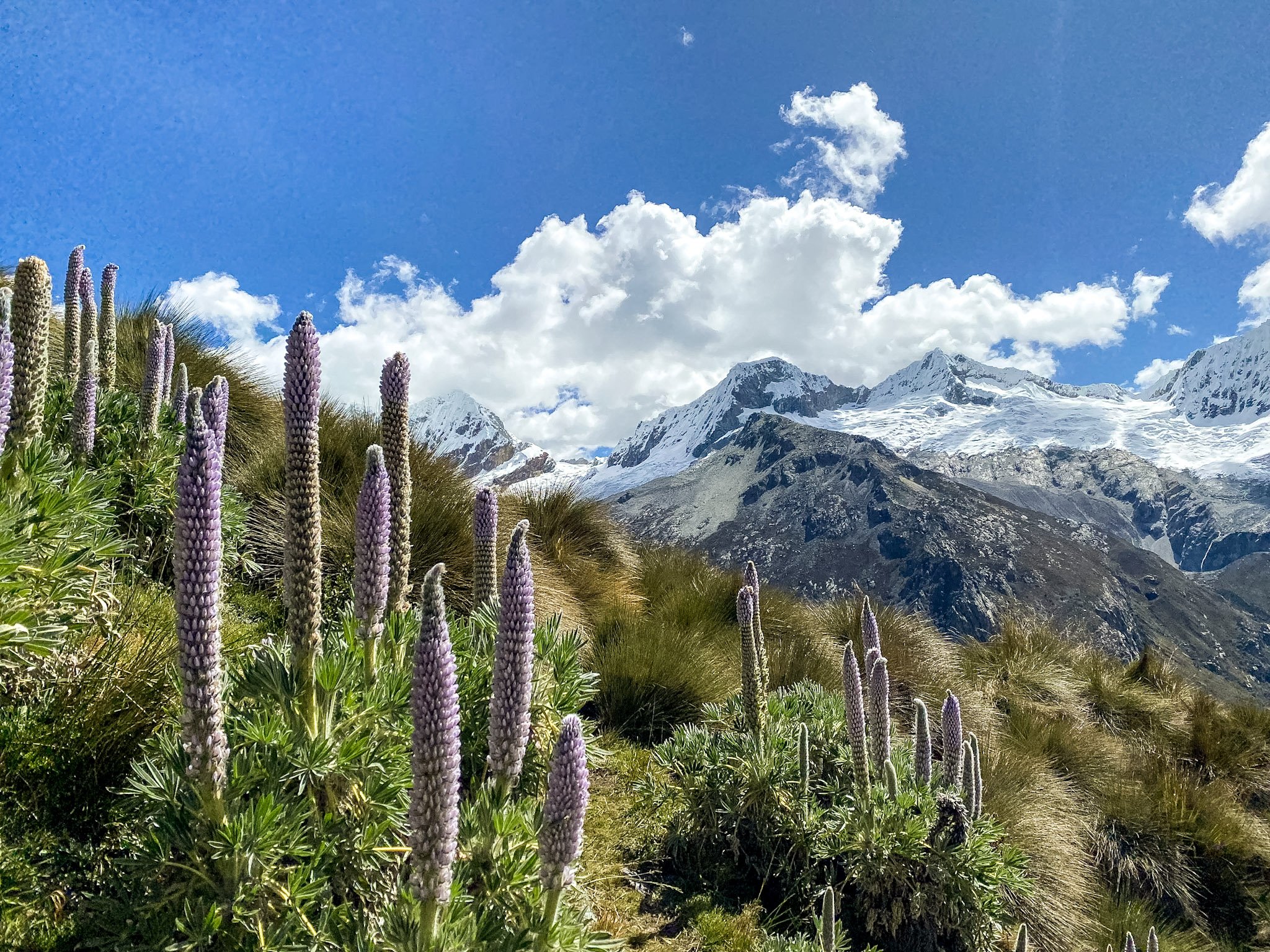

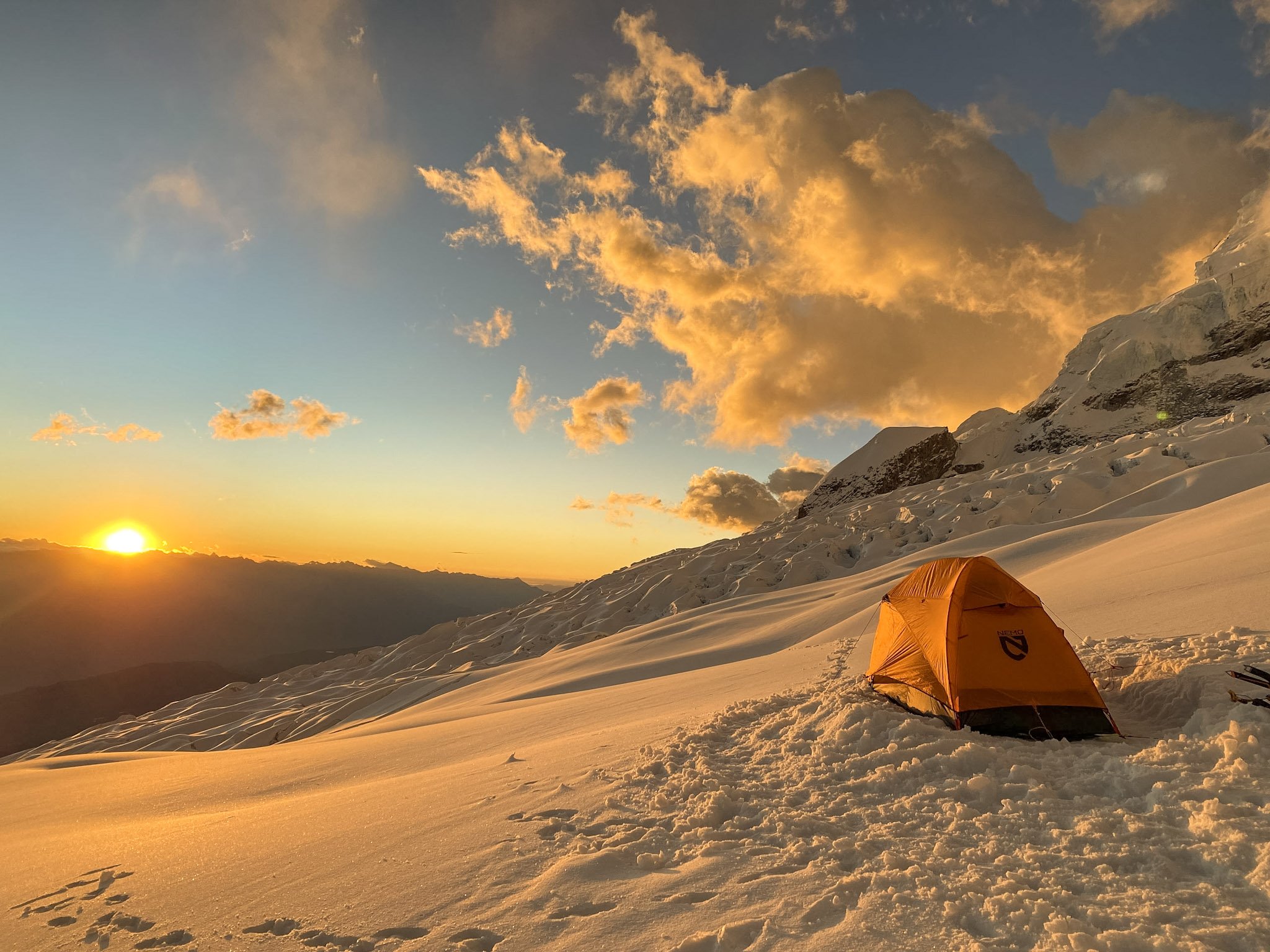
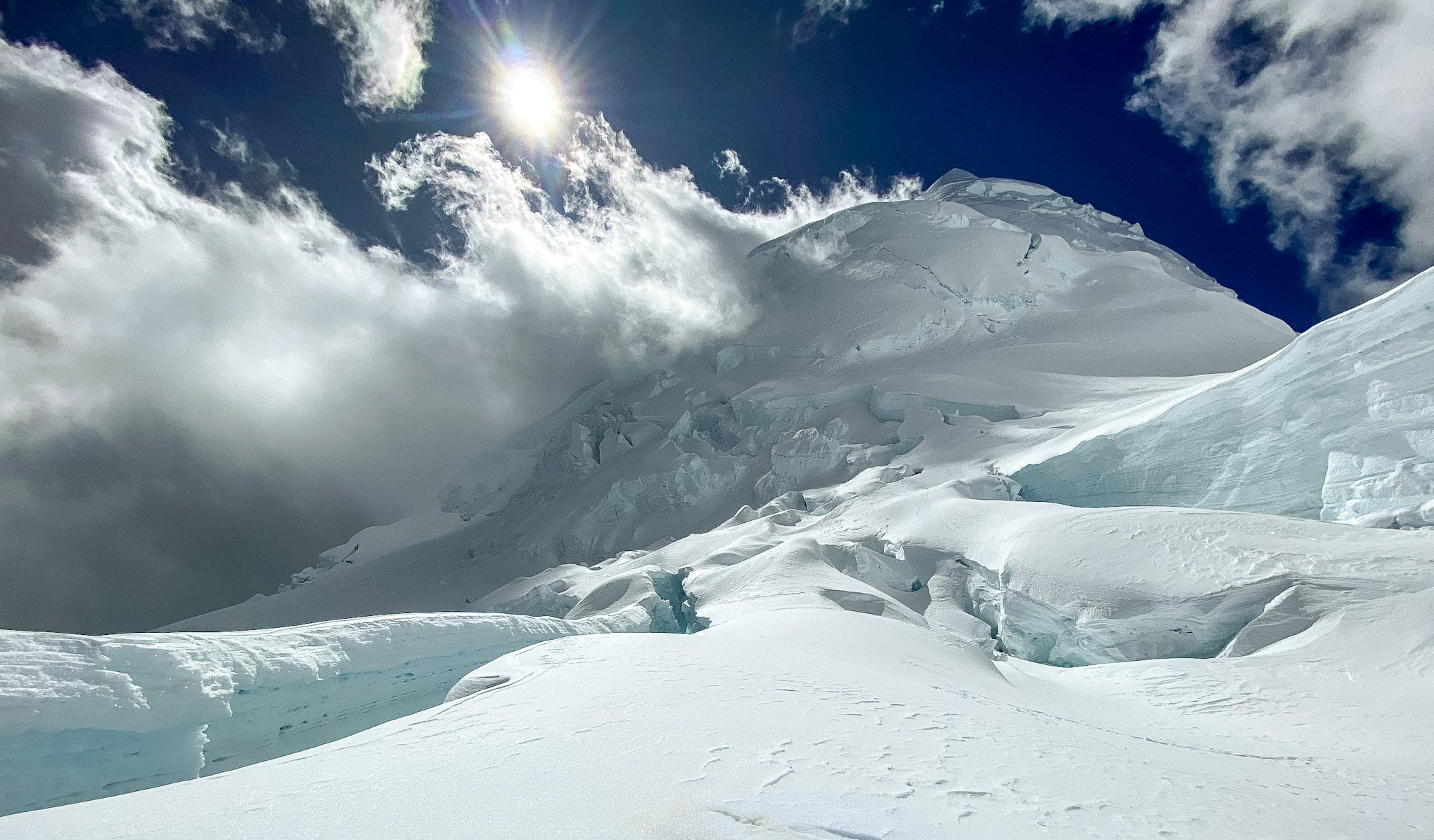
ISHINCA VALLEY
In nine days' time, Torsten and Camden planned to climb four big mountains: Nevado Ishinca (18,143ft), Urus (17,792ft), Ranrapalca (20,217ft), and Tocllaraju (19,797ft). At this point, Torsten and Camden were confident that they could climb certain mountains and get to high camps without Edgar.
Camden belaying one of the final pitches on Nevado Ranrapalca. PC: AAC Member Torsten Lyon.
“It’s more like our guide was a paid climbing partner that carried the extra rope and climbed all of the hard pitches,” said Camden.
The two climbed Urus and Nevado Ishinca with no problem. Ranrapalca proved to be a “wicked hard mountain.”
Five pitches of AI3 and M3 climbing in the dark and two pitches watching the sunrise led to a lovely summit. It proved to be a challenge as the two had little to no experience in mixed or technical ice climbing and the climbing was steep.
“If you look at a constant angle up, you can't see the stars because it gets so steep. It was just really intimidating,” said Camden.
Once down from the summit Camden and Torsten checked their Inreach to find that bad weather was approaching. They stashed gear and took a rest day and then it became a mad dash to climb Tocllaraju before bad weather moved in.
Taken on the descent from their hardest summit, Nevado Ranrapalca.
They climbed the standard route which ends 400 feet below the summit. A giant snow mushroom formed by the wind blocks the route to the summit. Camden asked his dad to put him on belay and traversed out to see if there was a route around. He saw a clear path but it was late in the afternoon and they were the only ones on the mountain. Torsten belayed him back in and they descended.
“There were some great decisions in not going for those summits,” said Torsten.
COLORADO
Exploring the ridge above Ranrapalca high camp with Nevado Tocllaraju in the background. PC: AAC Member Torsten Lyon.
The two made it safely back to Colorado narrowly missing the political unrest in Peru. Upon returning from Peru the two explored the American Alpine Club Library located in Golden, CO. They got lost in guidebooks written 30-50 years ago about the Cordillera Blanca— comparing conditions, climbs, and peaks to their experience.
The trip was a culmination of their climbing skills that they worked forward. They laid the foundation and built climbing and decision-making skills to minimize the risks in big mountain climbing. Now that they have a foundation of skills, they are prepared for new adventures in faraway places like the Canadian Rockies or the Alps, or in their backyard in the Colorado Rockies. You can find Camden studying maps and guidebooks for their next great adventure.
The Prescription — March 2023
This month we have a dramatic story that speaks to the strengths of our outdoor community. When Will Toor, the executive director of the Colorado Energy Office, and his wife, Mariella Colvin, a philosophy teacher at the University of Colorado, took a tumble, fellow climbers and hikers came to their aid.
We also cover a remarkable free solo incident below.
Fall on Snow | Climbing Unroped
Colorado, Rocky Mountain National Park, Flattop Mountain
A National Guard helicopter swoops in to evacuate Will Toor. He recalled, “It was raining and windy. This was super-skilled flying, and the helicopter took some real risks to save me.” Photo by Markian Feduschak.
On July 10, 2022, Will Toor (60) and his wife, Mariella Colvin (59), fell down the East Couloir (II, AI2 or 65°snow) on the north face of Flattop Mountain. At the top, a cornice collapsed, causing Toor to fall. The dislodged debris struck Colvin and they both tumbled 900 feet. Colvin left her immobilized husband to try to get help, bushwhacking nearly two miles despite having suffered broken ribs, a broken sternum, a broken wrist, and three fractured vertebrae. While she was gone, two climbers on an adjacent peak came over to assist Toor and summoned a National Park Service rescue. Toor was helicoptered out with a broken femur. Colvin was evacuated the next day.
Toor recalls: “Mariella and I arrived at the couloirs around 11:30 a.m. and spent some time examining conditions. We planned to climb the 1,200-foot-long East Couloir. The cornices at the top had not fully melted out, but there was a portion in the middle with a reasonable looking exit—maybe 80 feet of very steep snow, before turning almost vertical for ten feet.
Mariella Colvin climbing in couloir prior to the accident. Photo by Will Toor.
“It was a warm day, and because of the timed entry permit, we did not get an early start. But the couloir had been in shade down low, and the snow was good for kicking steps. I was maybe ten feet ahead of Mariella most of the time. We wore helmets and crampons. We had packs with some warm clothing. We did not bring a rope or pickets (to keep our packs lighter). We did not have satellite devices, only cellphones.
“We traversed the lower sections of the couloir but largely went straight up as it steepened. Just below the top, we stopped on a ledge and got out our second tools. We talked about traversing left to a lower-angle exit, but I felt more comfortable facing straight in, with a tool in each hand (for three points of contact), versus traversing. We started up again, and I was still able to kick very secure steps and get secure axe placements. Right around 1:30 p.m. I made the final move to the flat snow on top.”
At this point, the snow collapsed. Toor’s memory of the moment is hazy: “I remember starting to fall and being totally confused how it was happening. I was done with the climb! Our theory is, the old cornice fracture line, a few feet back from the edge, collapsed.”
Colvin recalls, “I was knocked over backwards. I lost both ice axes. I slid until I found myself rolling, which eventually turned into somersaulting, sliding, and tumbling. I was aware enough to see some rocks in the snow as I hit the lower-angled section and did my best to miss them. I dragged my crampons to come to a stop near the bottom and amazingly didn’t break my ankles.”
Meanwhile, Toor recalls “hearing Mariella scream and trying to self-arrest. I remember tumbling out of control and having a fleeting sense that this was the end. Mariella also remembers feeling we were probably going to die.”
“I was aware of Will sliding behind me,” Colvin recounts. “When we finally stopped, I could skootch sideways to him. Will thought his femur was broken. I knew my upper body had significant trauma, but my legs were fine. Will kept asking, ‘Where are we, what happened?,’ which made me worry about a concussion. I tested my mental state by asking myself easy arithmetic questions and did okay. I yelled for help but got no response. I realized I would have to get help, so I gave Will my warm clothes and food and set off with nothing but a windbreaker.”
Markian Feduschak, right, and Riley Gaines. Both work at the Walking Mountains Science Center in Colorado, as president and community science and hiking coordinator, respectively. Photo by Riley Gaines.
Toor recounts, “At 3:30 p.m., two climbers (Markian Feduschak and Riley Gaines) arrived. They had been climbing on Notchtop and had heard our calls. Seeing them walk toward me was one of the best sights of my life. They immediately took off their own puffies and put them on me. They were able to text with the Park Service on a Garmin InReach. They were calm and competent.
“Unfortunately, I was still cold because I was lying on the snow. Then, another party of three climbers appeared. They used my crampons to dig a trench, then lined it with packs, and dragged me into a sitting position. We got contact back from the Park Service confirming Mariella was with folks tending to her, which helped me relax. At that point, I hadn’t realized that she had serious injuries beyond a broken wrist.”
Colvin, unaware that aid had arrived for Toor, had “headed straight down over snow and rock slabs, avoiding cliffs and talus fields. I did stumble across one of the most beautiful places I’ve ever seen—with a waterfall, green meadow, wildflowers, and butterflies. I debated lying down to nap right there, but knew I had to keep going. I found that focusing on identifying wildflowers kept my mind in the here and now.
Colvin and Toor in the hospital. Toor says, “The whole experience really makes me see the good in people.” Photo by Will Toor.
“Finally, I reached Odessa Lake. This was a good place to yell for help, as my voice would carry across the water. I heard helicopters circling, and I felt sure they were going to Will and was really relieved. That gave me permission to lie down and rest, but within a few minutes I saw a man and his son. He sent his son in search of help and helped me on the rough trail around the lake to a campsite.
“A couple camping there had two tents. She set me up in a sleeping bag and air mattress. Someone else had a Garmin device and contacted the Park Service.”
Meanwhile, still at the bottom of the East Couloir, Toor, Feduschak, and Gaines awaited more help. Toor recounts, “Around 6:30 p.m. we saw three yellow raincoats—the Park Service hasty team. They had warm blankets and painkillers. The adrenaline was wearing off, and the pain was setting in, so this was very welcome. Eventually, a big National Guard helicopter appeared. Just before 8 p.m. they dropped a litter and an attendant.”
Meanwhile, because of bad weather and impending darkness, Colvin had to stay at the hikers’ campsite overnight. “Two medics hiked in and spent the night with me, monitoring vital signs and administering painkillers,” she said. “They initially thought I would be able to walk out, but it became clear I would need an evacuation. So, the next morning two teams of rescuers transported me to a clearing to be picked up by a helicopter.”
Analysis
Toor and Colvin are very experienced, having climbed since the 1980s in the Tetons, Colorado, and the Canadian Rockies. One can argue in favor of the use of ropes and intermediate protection on snow climbs, but given the pair’s competence, such precaution might have only slowed them down, exposing them to even softer snow conditions.
The team’s late start due to the national park’s timed entry played an important role. Toor wrote that as they started up the couloir, “We were a bit concerned about the temperature.” While RMNP’s timed-entry system can be a challenge, it also reinforces best practices by encouraging an early arrival at the trailhead. A 5 a.m. start might well have prevented this accident.
Alpine climbing is full of unforeseen hazards. In line with Toor and Colvin’s cornice fracture theory, Park officials also suspect the cornice hadn’t melted out completely, contributing to its collapse.
Toor says, “SO MANY people put themselves out to save us, in little ways and in big ways, with skill, enormous effort, discomfort (the climbers with me had to jog to stay warm because I had their warm clothes, and that couple gave up their tent and sleeping bag for Mariella), and real risk (the helicopter team). I just can’t thank everyone enough. I am buying a Garmin InReach for us and one for my son Nicky.
(Sources: Will Toor, Mariella Colvin, Rocky Mountain National Park.)
Free Solo Rescue on El Cajon Mountain
Is this picture familiar? El Cajon Mountain, the site of a December free solo accident, was the location of a February rescue of a free soloist. Both incidents took place on Leonids (3 pitches, 5.9). The route is to the left of the prominent black roof and dihedral. Photo by Michael Sandler.
In December, we reported a tragic free solo accident in Southern California. It was the third free solo accident in Souther California during 2022.
Last month, a rescue of a stranded free soloist took place on the same crag. Incredibly, the latest incident, involving yet another unroped climber, unfolded on the exact same route!
Climbers, being passionate and opinionated, thrive on conjecture, estimations, and in some cases—judgment. Here, at Accidents in North American Climbing, we avoid emotional opinions. We report events and provide analysis of the facts. Our job is to educate by describing accidents and asking what went wrong. Because of that, we seldom do in-depth reporting of free solo accidents, as that style is a personal choice and there is usually scant helpful analysis to be made after the fact.
So, read on and make your own assessment here on the Mountain Project forum.
Join the Club—United We Climb.
Get Accidents Sent to You Annually
Partner-level members receive the Accidents in North American Climbing book every year. Detailing the most noteworthy climbing and skiing accidents each year, climbers, rangers, rescue professionals, and editors analyze what went wrong, so you can learn from others’ mistakes.
Rescue & Medical Expense Coverage
Climbing can be a risky pursuit, but one worth the price of admission. Partner-level members receive $7,500 in rescue services and $5,000 in emergency medical expense coverage. Looking for deeper coverage? Sign up for Leader-level and receive $300k in rescue services.
Shop the ANAC Collection
Sign Up for AAC Emails
Transforming the Conditions for the Send
Saturday Session panelists Kareemah Batts, Roshni Brahmbhatt, Lyndon Cudlitz, Ady Wright, and Tommy Caldwell.
The 2023 Annual Benefit Gala
Together we laughed, cried, and celebrated this incredible community.
At this year's AAC Gala, the energy for advocacy was unprecedented. You could feel it in the room, the energy to transform the conditions for the send. At the AAC, we know there are a mess of things impacting the send, not just the weather! Bigger picture—climate change, equitable climbing access and inclusive community, the conservation of public lands, ever evolving climbing management plans, and education for climbers—are all impacting our climbing. At the AAC, we're fighting to transform those conditions in order to protect the heart of climbing—the people and places who make climbing so special. At this year's Gala, the climbing community turned out in force to support and celebrate this transformation.
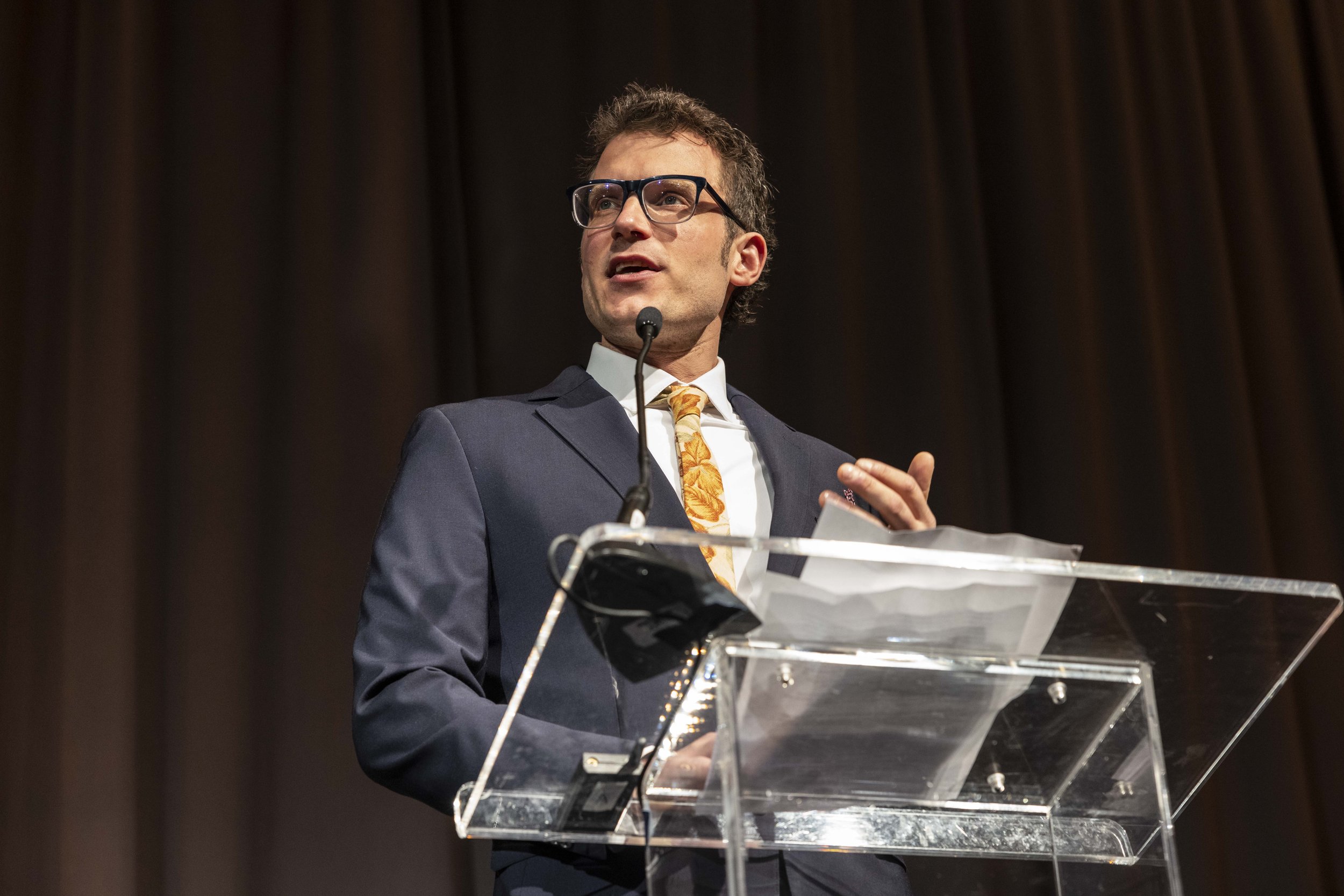

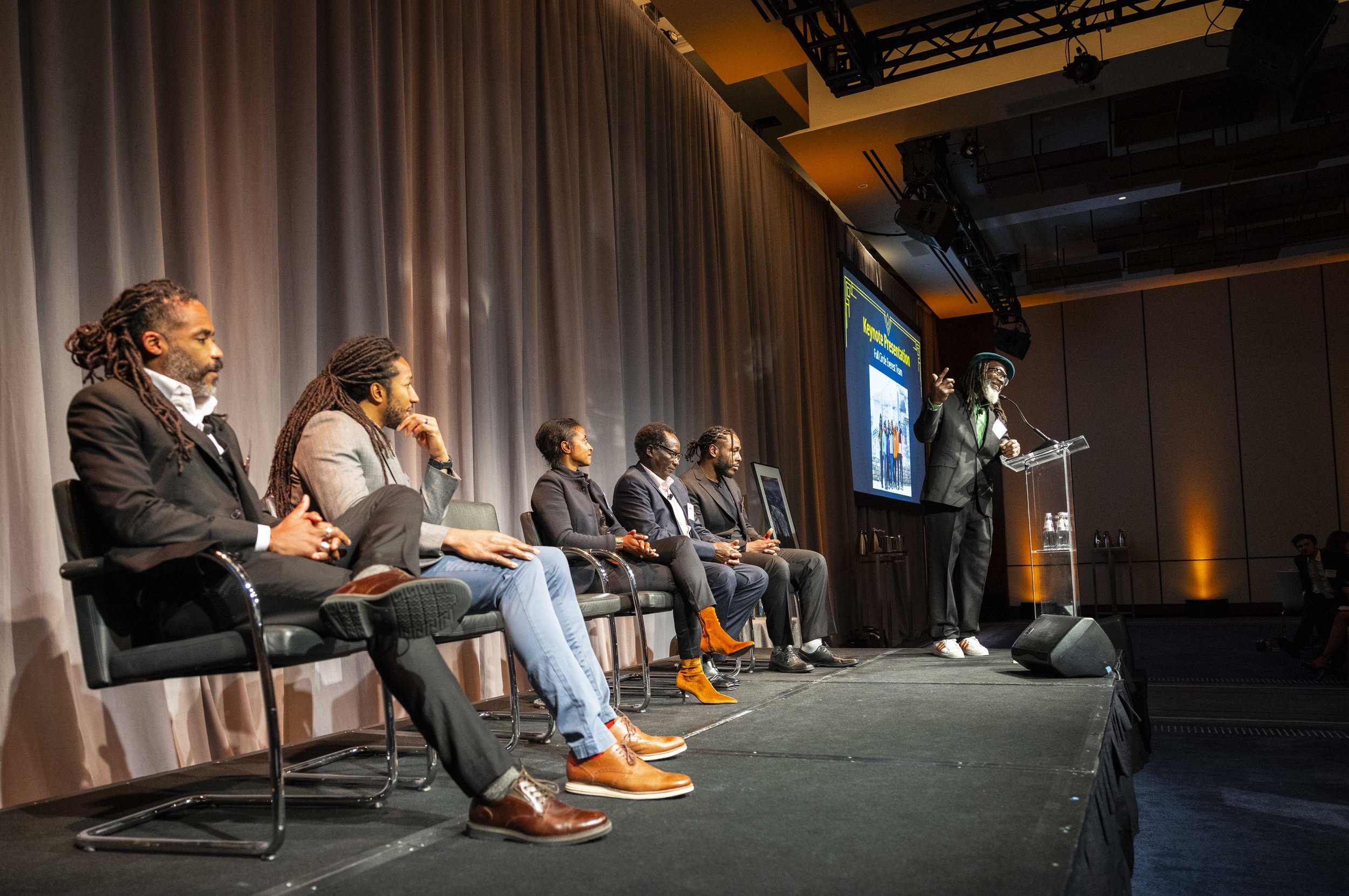
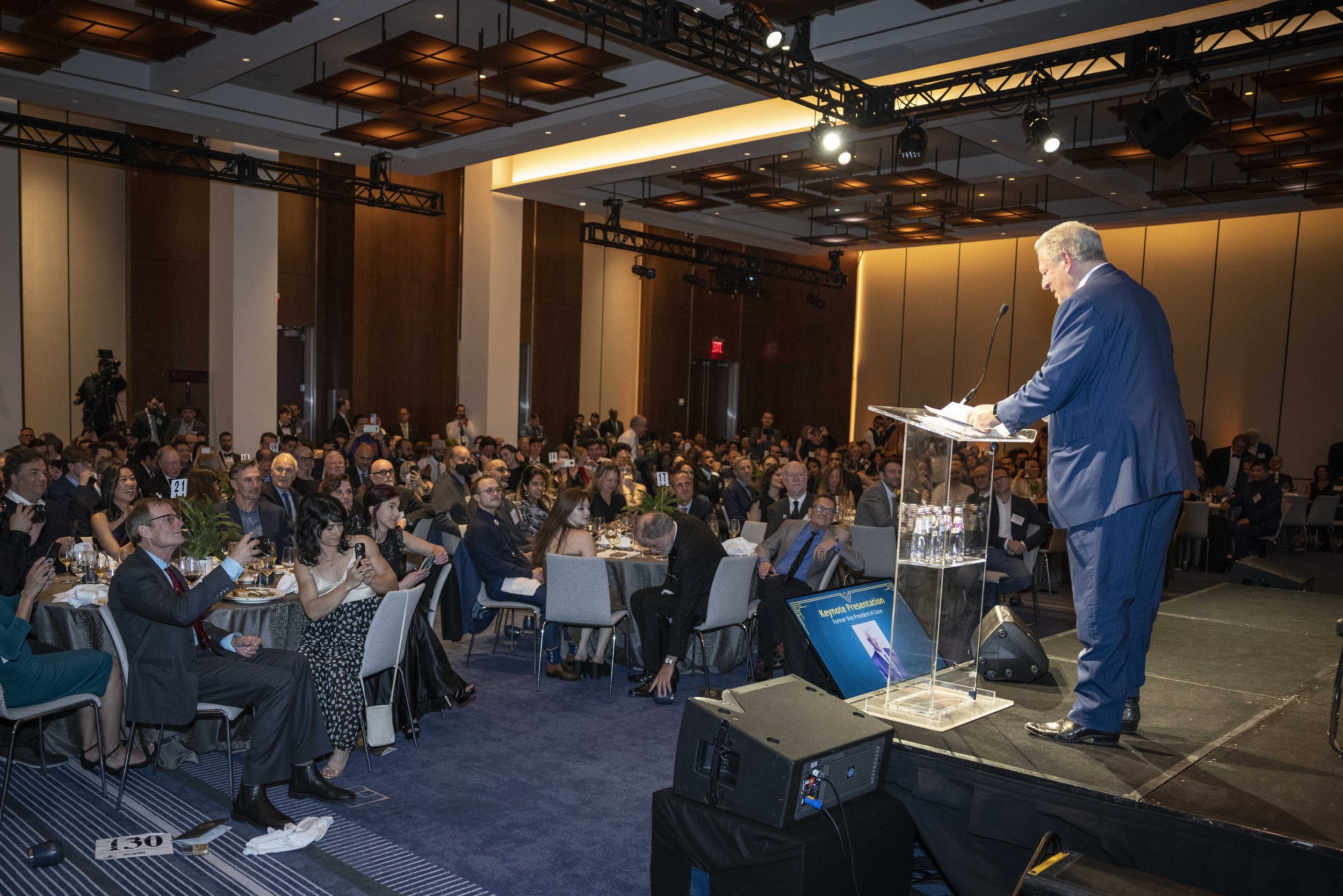
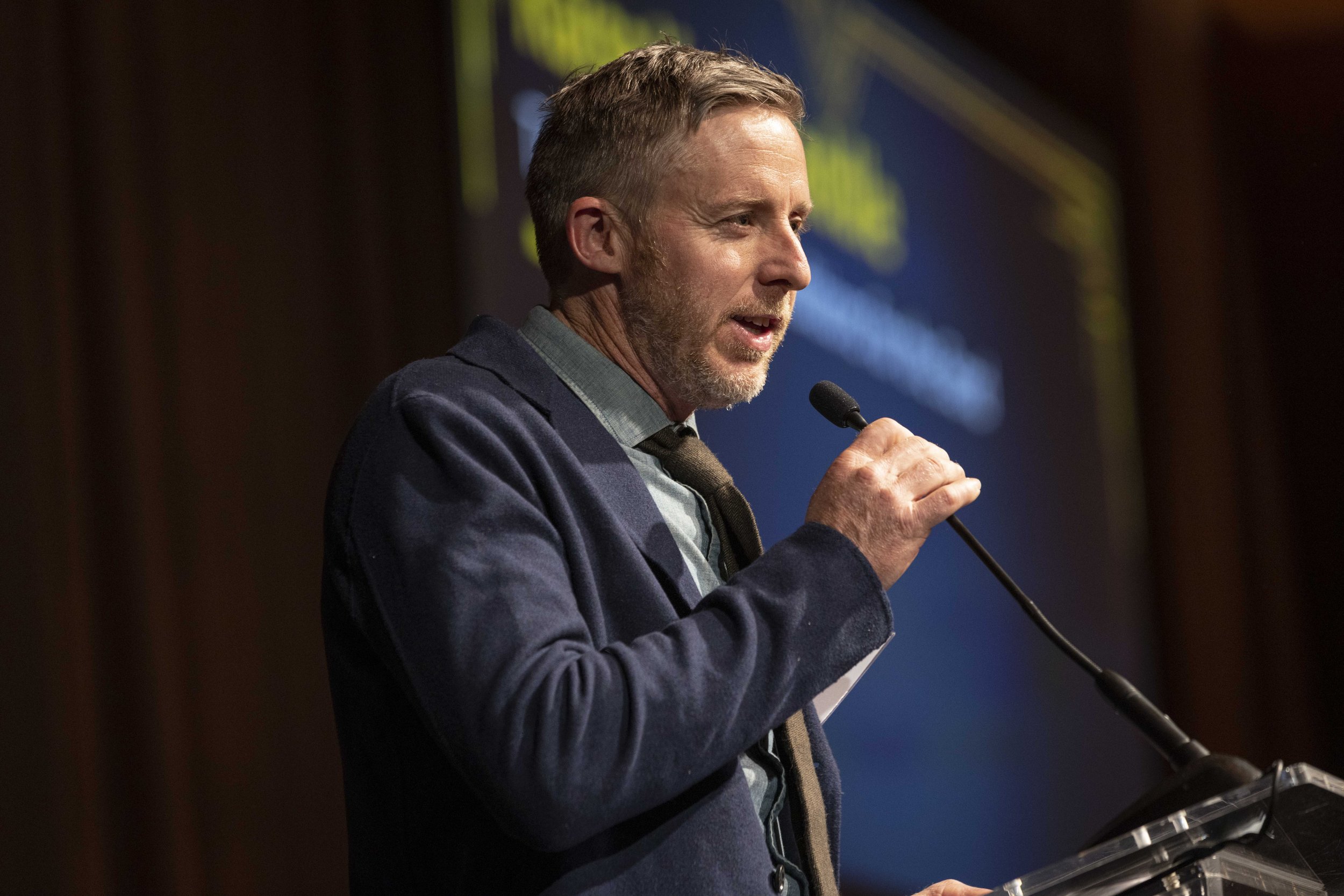
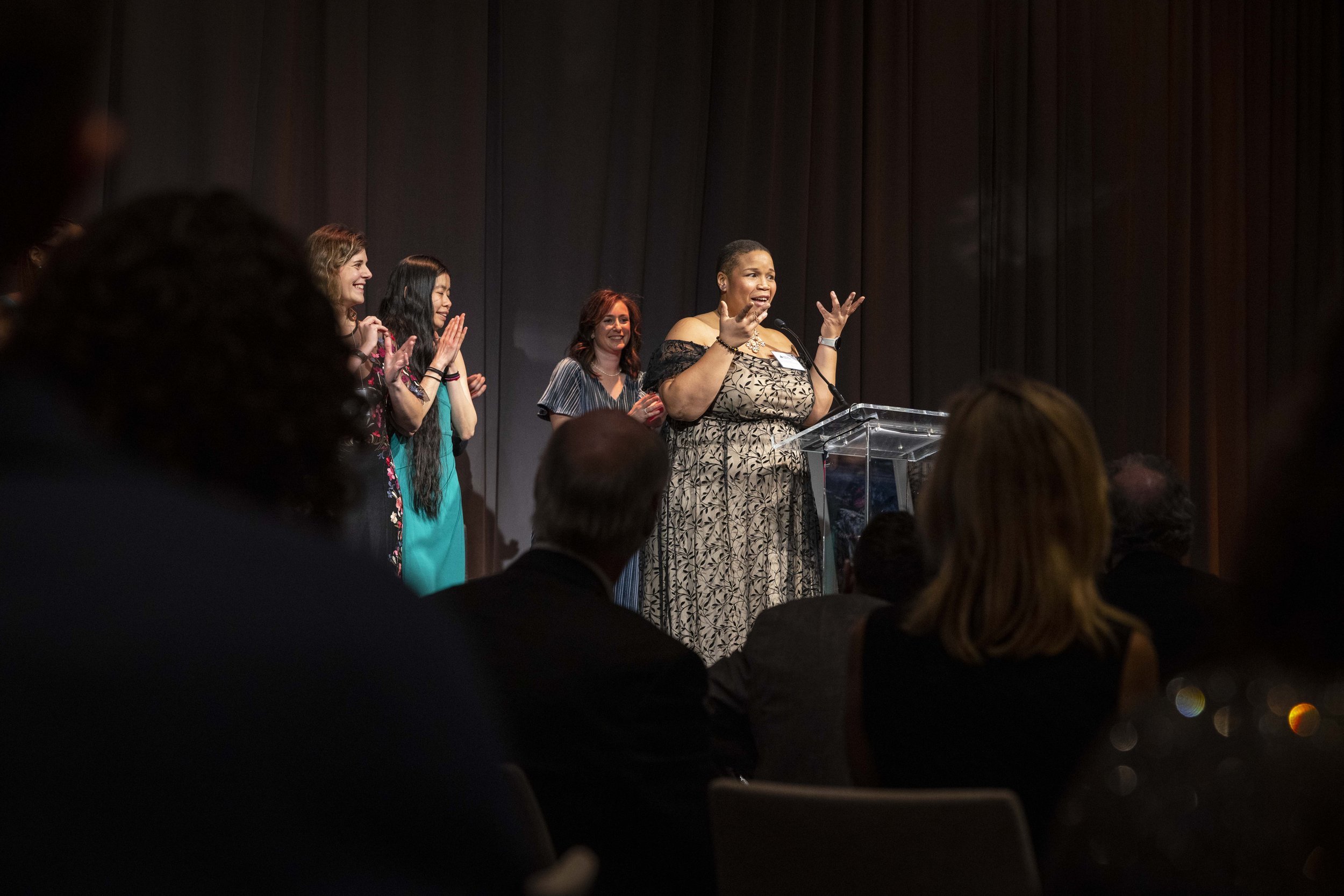
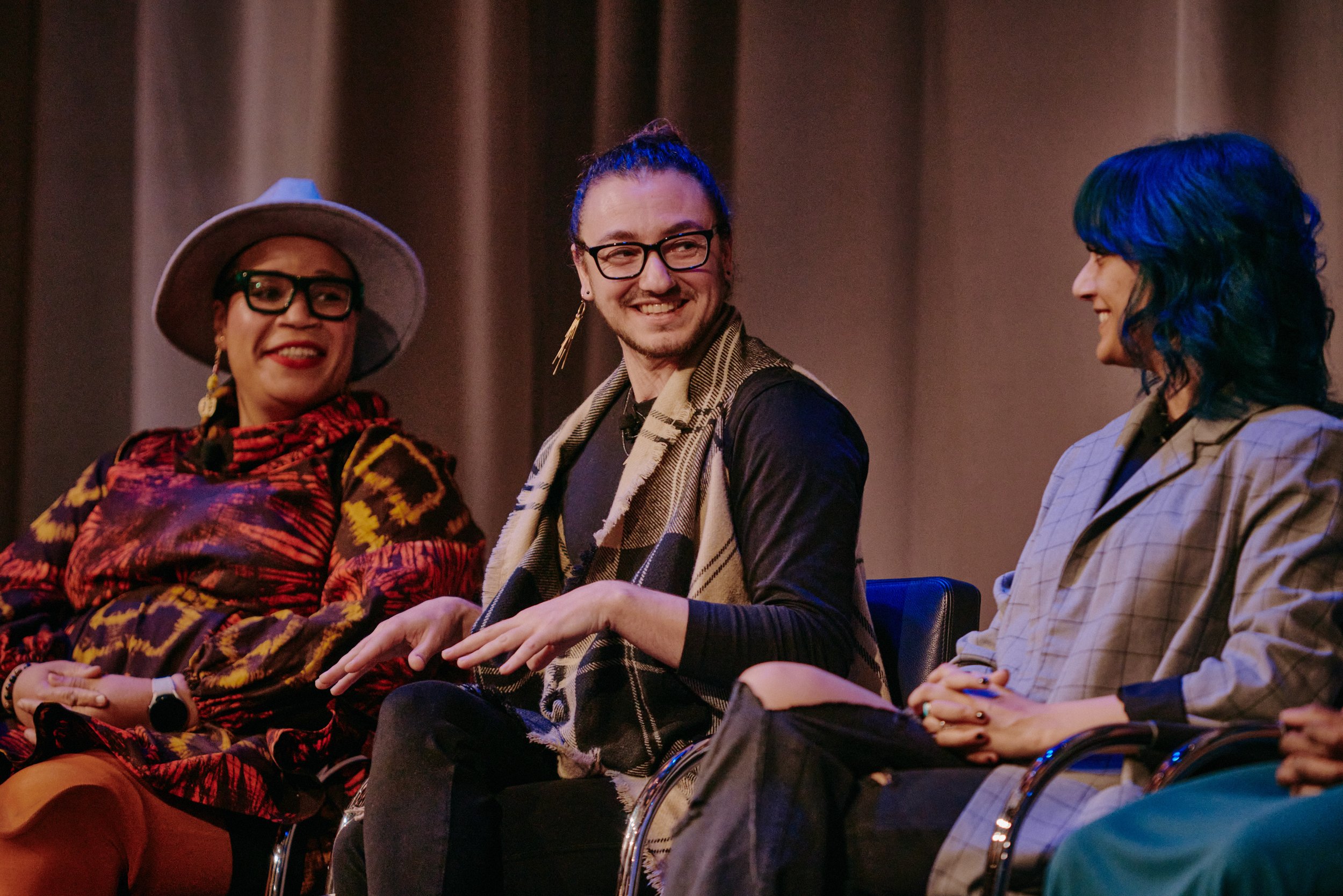
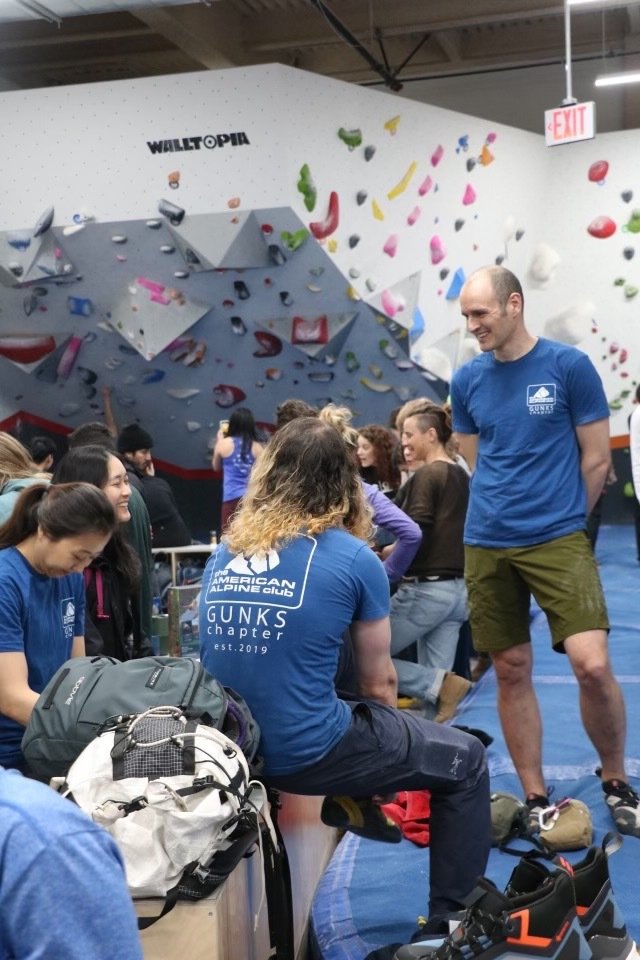
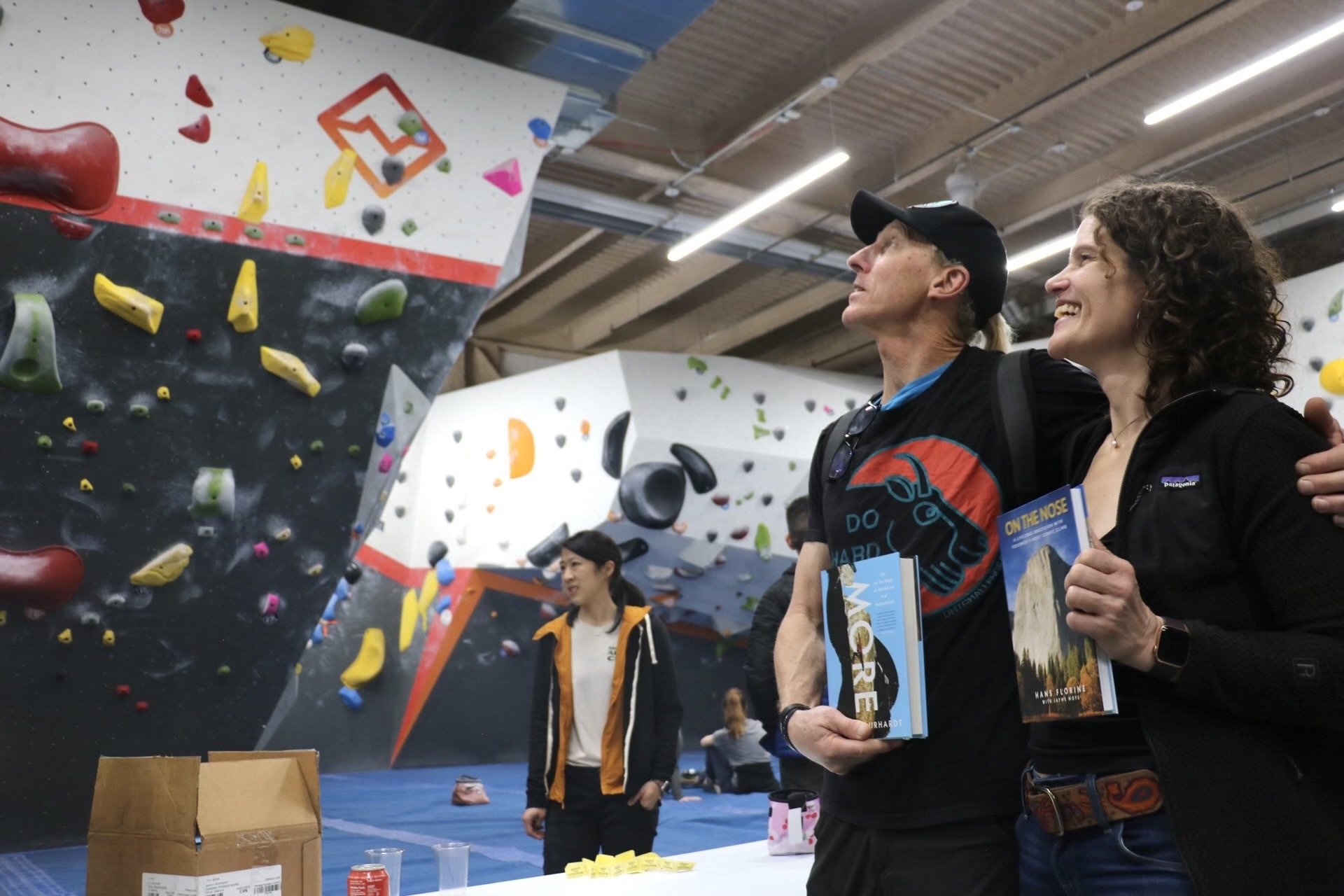
Climbers near and far came together to celebrate the boldness that is crucial for our climbing endeavors and advocacy. We were joined by Former Vice President Al Gore, the Full Circle Everest Team, and a room full of AAC members, industry leaders, and climbing stars.
Dive deep into an unforgettable night in climbing, below!
The Line — March 2023
The Line is the monthly newsletter of the American Alpine Journal.
ARRIGETCH ADVENTURES
The next AAJ’s Alaska section will open with a report from the Arrigetch Peaks in the Brooks Range, where Ethan Berkeland and Tristan O’Donoghue traveled with the help of an AAC Mountaineering Fellowship Fund grant for climbers 25 or younger. Their trip was plenty challenging, with a week of storms at the start. But eventually they managed a couple of new routes, including a beautiful long traverse, before packrafting out of the mountains at the end of the expedition. We only have space to publish one photo in the 2023 AAJ, so Ethan and Tristan agreed to share more of their images here. Enjoy!
WILD ALASKA
Red line shows the ascent and main descent route on Mt. Alice. Yellow line is a variation taken by one skier. Photo by Sarah Hermann.
Speaking of Alaska….. One year ago, four Alaskans took advantage of exceptional conditions to make a possible first ascent and certain first descent of a wild face in the Kenai Mountains. The west face of Mt. Alice rises about 2,500 feet above a high basin, with pitches up to 65 degrees. After a series of storms in March plastered the face in deep maritime powder, Michael Burmeister, Ryan Hokanson, Raven (Samuel) Johnson, and Ben Rininger climbed the face and successfully skied and snowboarded back down on March 21. Johnson’s report for the 2023 AAJ is available now online.
Join the Club—United We Climb.
Get the AAJ Sent to You Annually
Partner-level members receive The American Alpine Journal book every year. Documenting mountain exploration and the year’s most significant ascents through first-person reports and photos, it’s an essential historical record and a feast of inspiration.
Rescue & Medical Expense Coverage
Climbing can be a risky pursuit, but one worth the price of admission. Partner-level members and up receive $7,500 in rescue services and $5,000 in emergency medical expense coverage. Looking for deeper coverage? Sign up for the Leader level and receive $300k in rescue services.
‘ACTIONS SPEAK LOUDER…’
Tackle on a new route near the Tokositna Glacier in 2009. Photo by Jay Smith.
Jack Tackle’s expeditionary climbing career spans nearly 50 years, including more than two dozen Alaska expeditions. Hear his climbing origin story and why he prefers to let his climbing do the talking in the AAC’s latest Legacy Series video (below). Then check out Jack’s beautiful AAJ 2010 article, “Catharsis,” describing an Alaskan comeback tour with longtime partner Jay Smith, following two life-threatening episodes in Jack’s life.
OVERHEARD
“Standing on the hard snow, contemplating the idea of beginning a new route at the late hour of 11:30 a.m., we were struck with ambivalence. Launching now would almost surely bring future misery; not launching now would just as surely inspire future regret. Up we went.”
The north face of Holliway Mountain, about ten miles north of Washington Pass.
Hoping to climb the first route up the north face of Holliway Mountain in the North Cascades, Rolf Larson and Eric Wehrly made a false start that cost them three hours. After retreating, they wandered along the base of the wall to search for another possible line. As predicted, starting up an unclimbed 2,000-foot alpine route at nearly noon did earn them some hardship, but they still sent. You can read Wehrly’s report for the upcoming AAJ at our website.
Shop the AAJ Collection
The Line is the newsletter of the American Alpine Journal (AAJ), emailed to more than 75,000 climbers each month. Find the archive of past editions here. Interested in supporting this online publication? Contact Billy Dixon for opportunities. Suggestions? Email us: aaj@americanalpineclub.org.
Sign up for AAC emails
The Ultimate Freelancer
Member Spotlight: Lauren DeLaunay Miller
by Hannah Provost
AAC member Drew Smith
Many of our members have a unique relationship with the Club, finding their niche and contributing in their own way. Lauren DeLaunay Miller describes her role with the AAC as “the ultimate freelancer position.” Lauren’s contributions to the Club seem endless: she was a sound engineer and editor for The Cutting Edge Podcast and the American Alpine Club Podcast, the California editor for the American Alpine Journal and Accidents in North American Climbing, and an event coordinator for the Bishop Highball Craggin’ Classic. In addition, she’s spent three summers working for Yosemite Search and Rescue (YOSAR) and is the editor of the newly released anthology Valley of Giants: Stories from Women at the Heart of Yosemite Climbing. We sat down to talk with Lauren about her time at YOSAR, her book, and the story behind her love of the AAC.
Connect: Life on the Edge of Climbing and Motherhood, with pro Majka Burhardt
Majka Burhardt is a pro climber, a certified climbing guide, a conservation entrepreneur running an international organization, and a writer. She is also a mother to twins, and she’s still figuring it all out. She’s leaning into messy coherence, and learning how to be the best mom, climber, spouse, professional, and guide along the way. Her new book, MORE: Life on the Edge of Adventure and Motherhood is a compilation of in-the-moment journals and voice memos Majka recorded while she was pregnant and during the first five years of her children’s lives—recording the raw messiness of wanting to do it all, and even then asking for more…of life, and of herself. Along the way, she takes an honest look at risk and motherhood, gender roles, navigating jealousy, her work, her marriage, climbing hard with the changes her body experienced, and giving her children her best and highest self. Majka’s book More identifies the ways that life seeps into our climbing and is intricately tied into it. We talk about all this and more in this episode.
The book is on the March Must-Read List from Next Big Idea, and you definitely want to get your hands on a copy.










